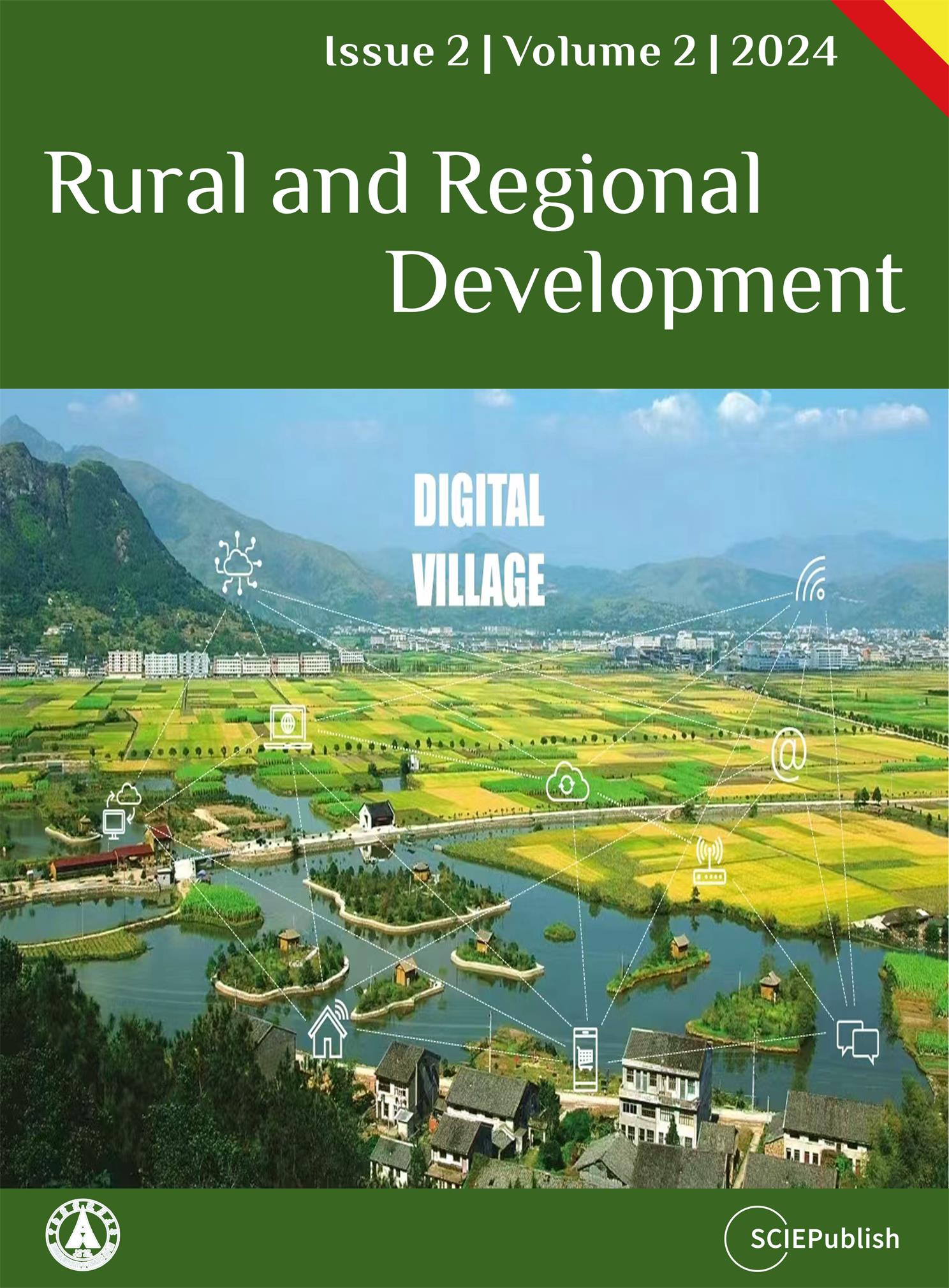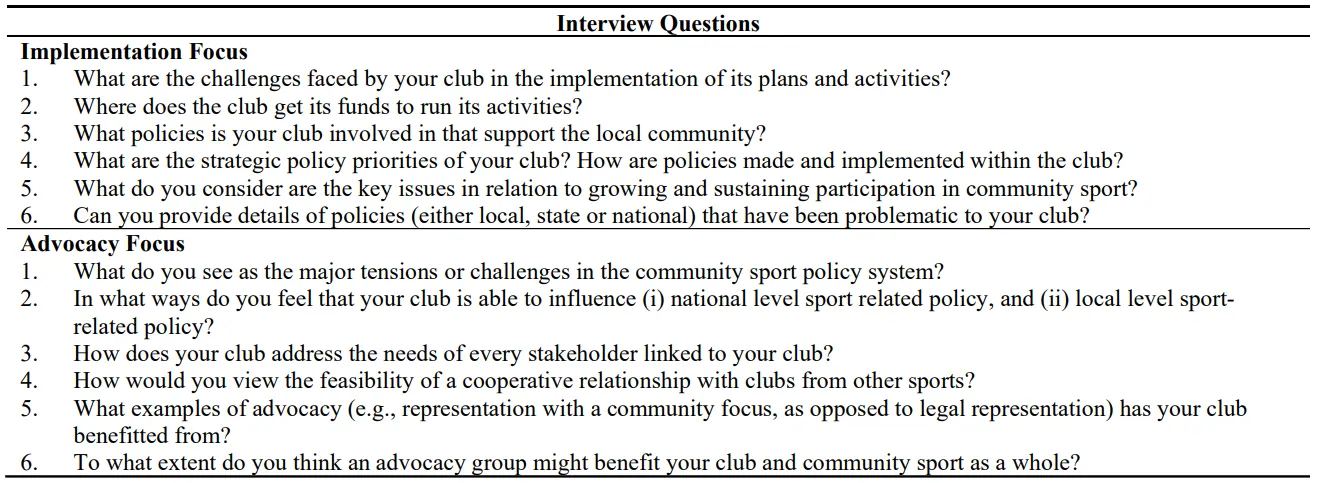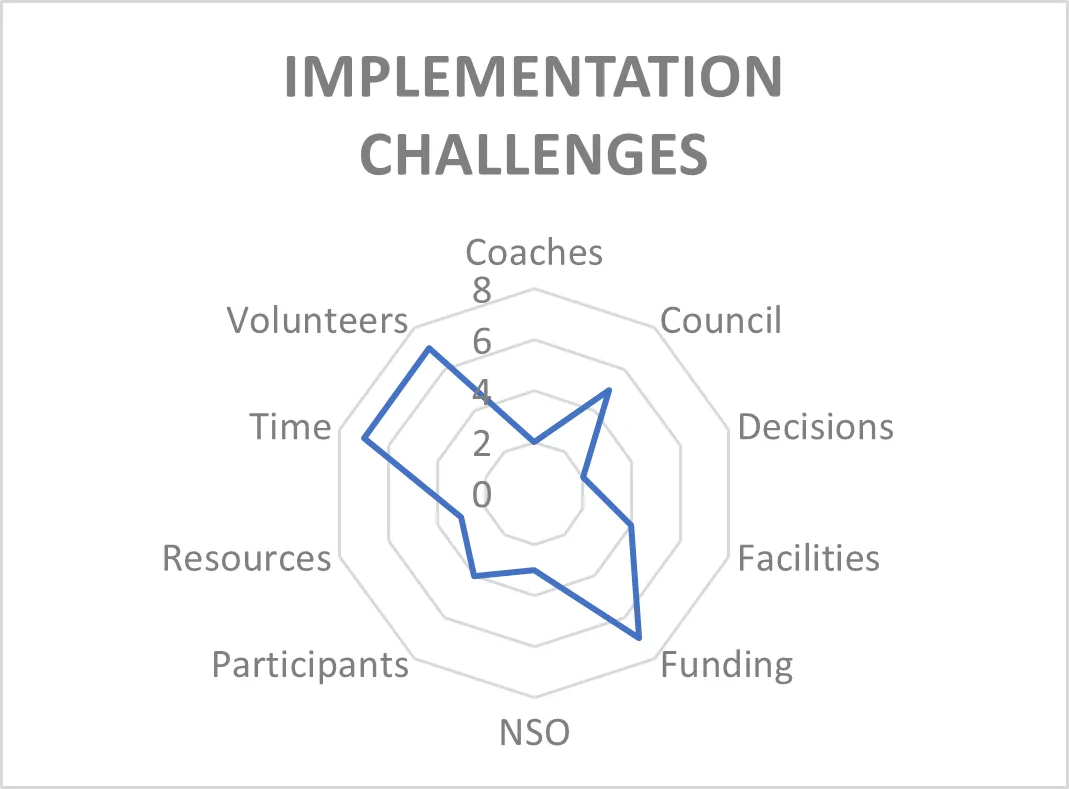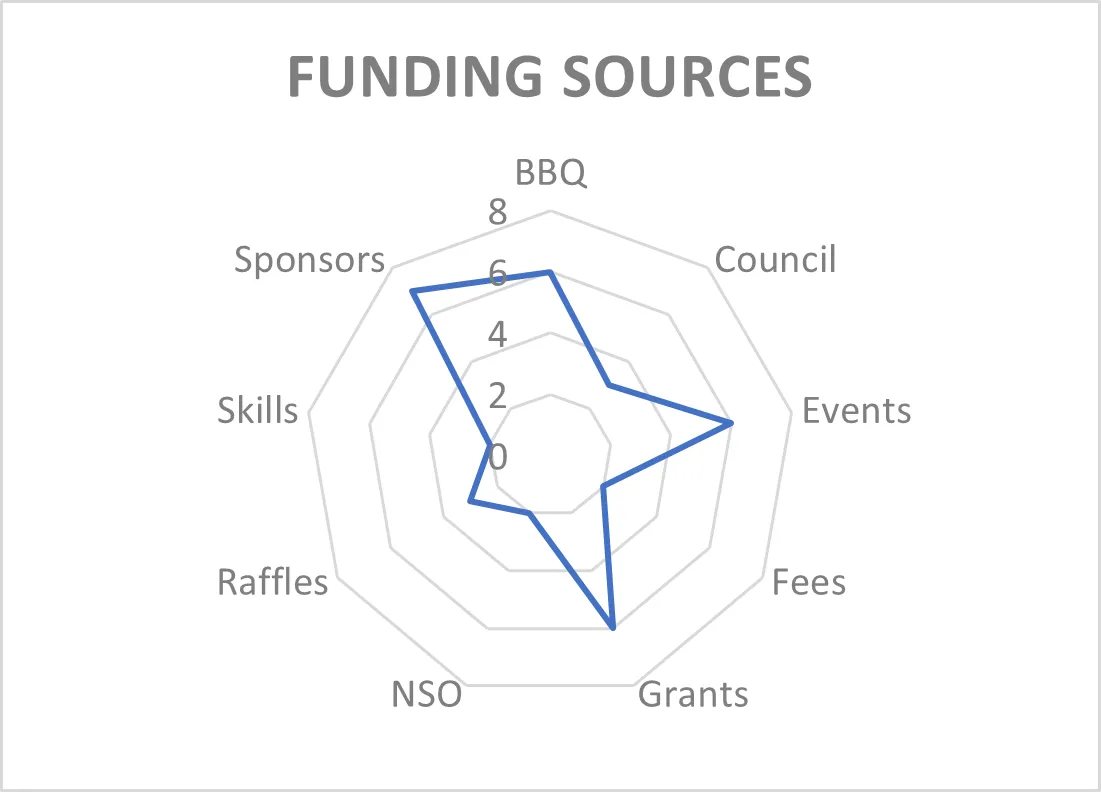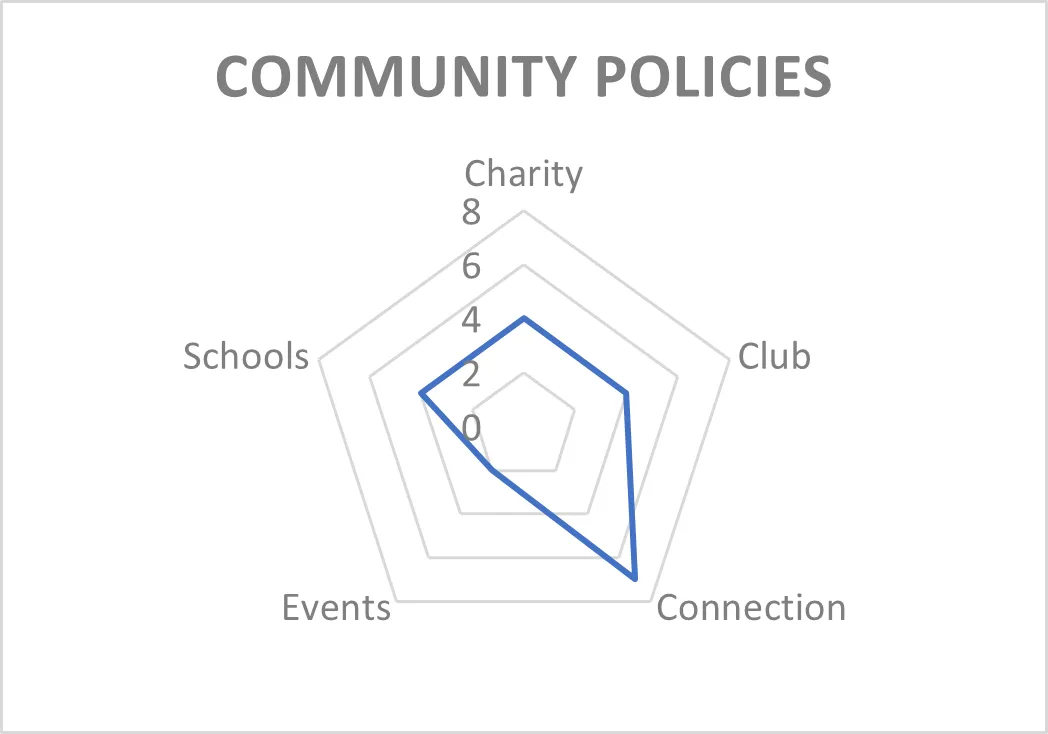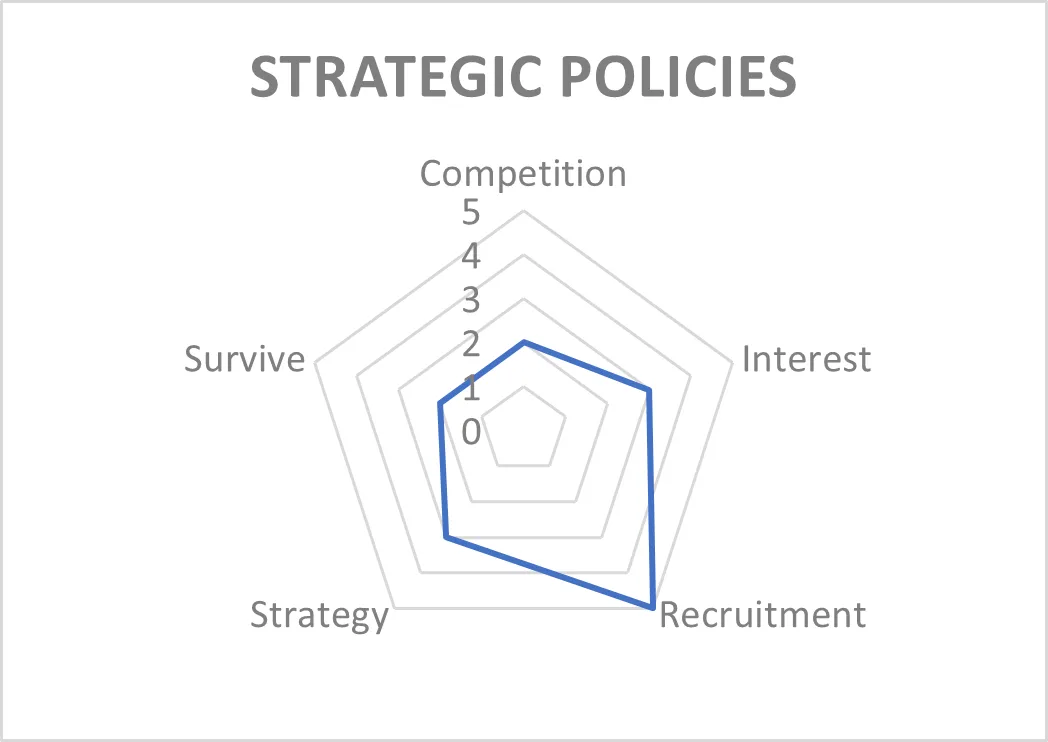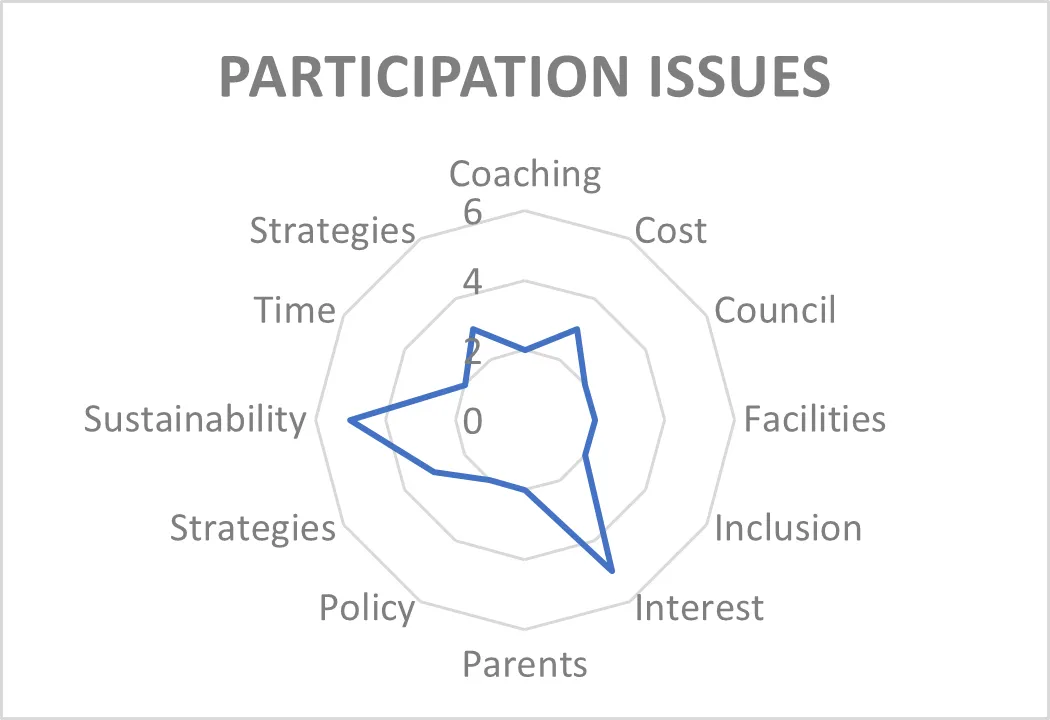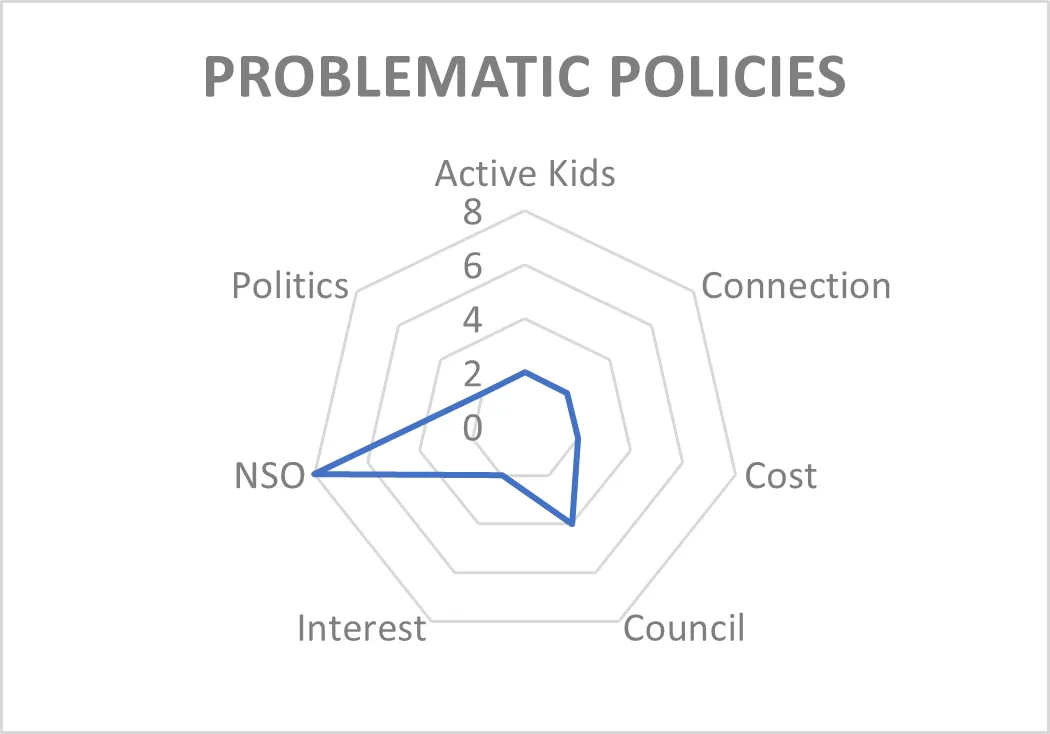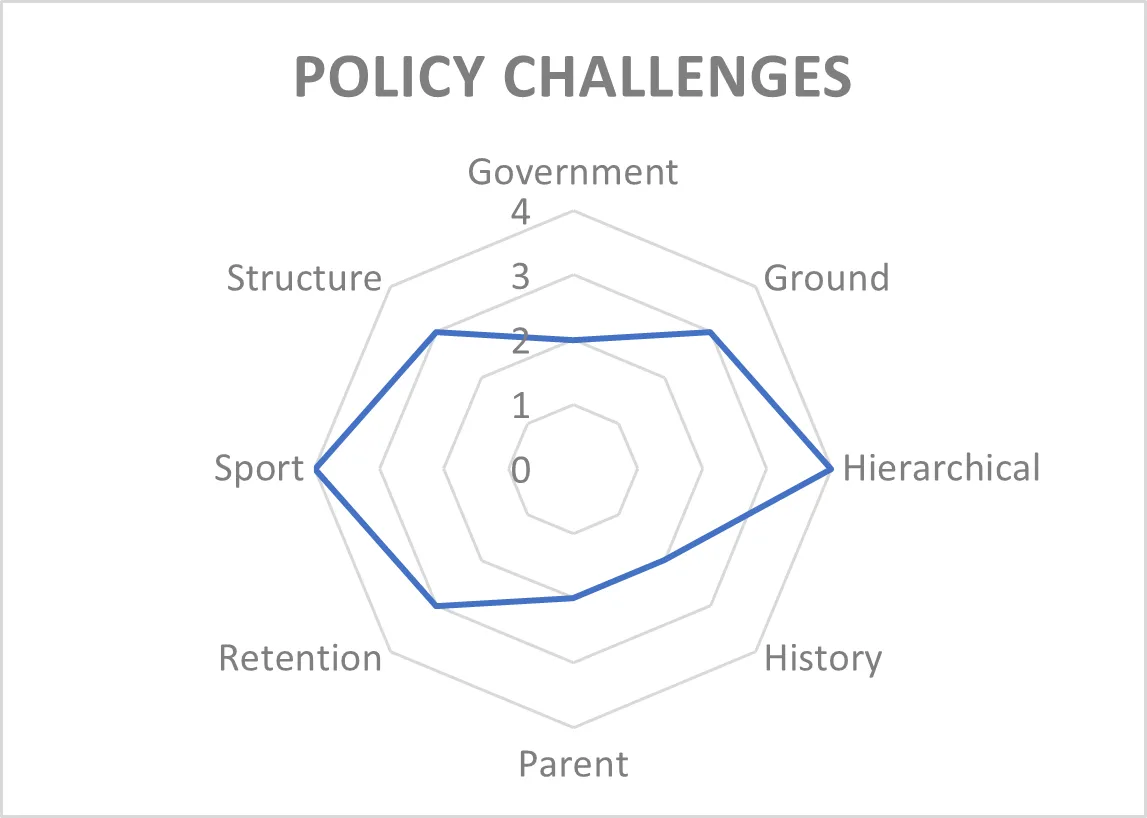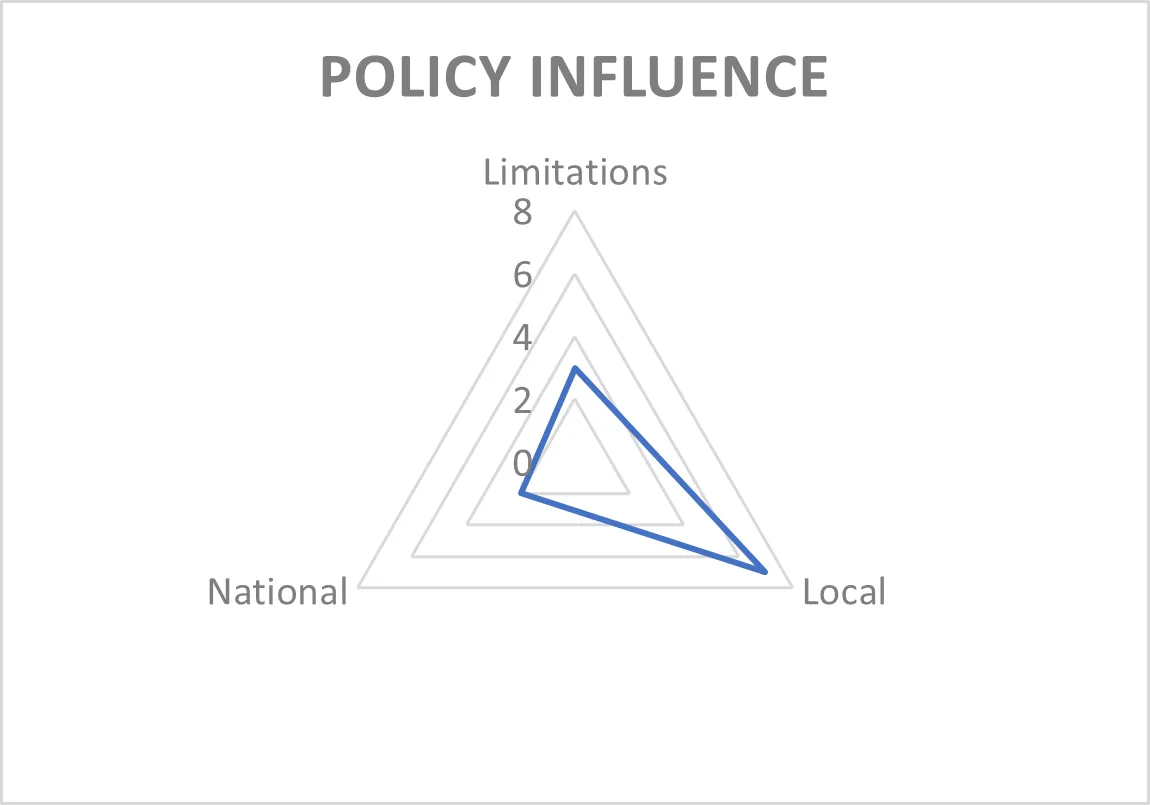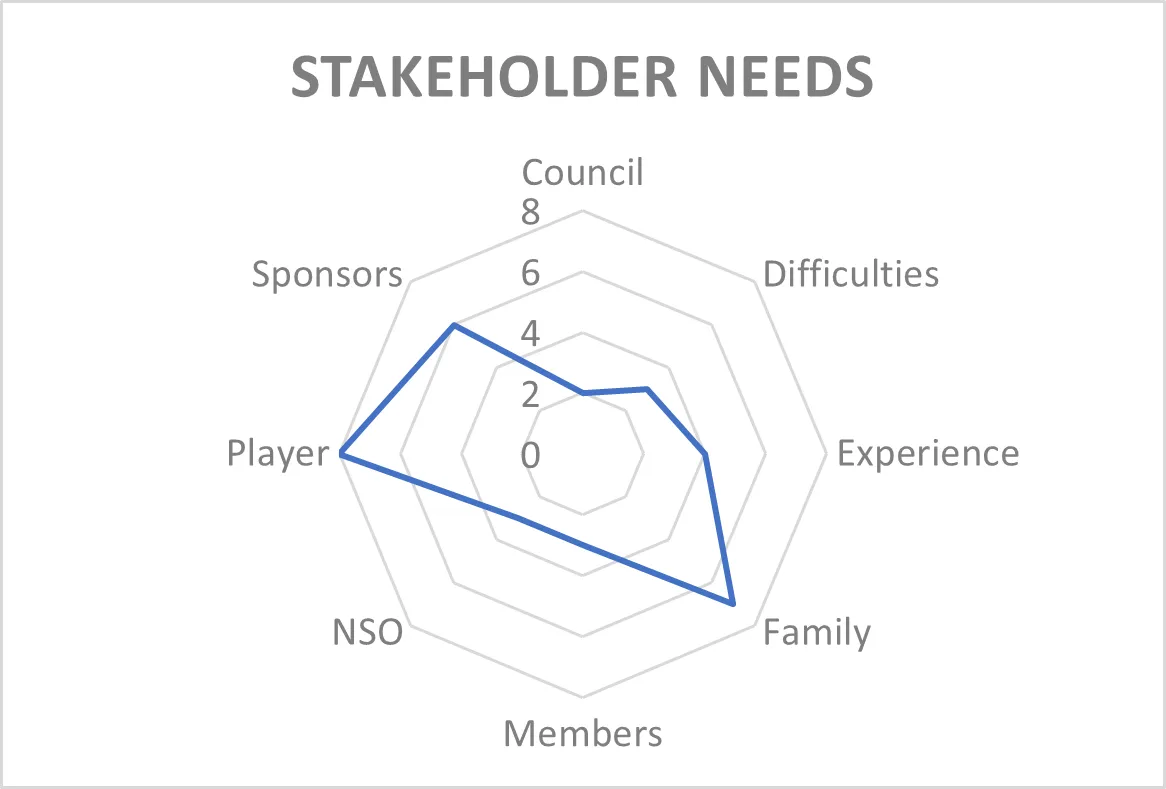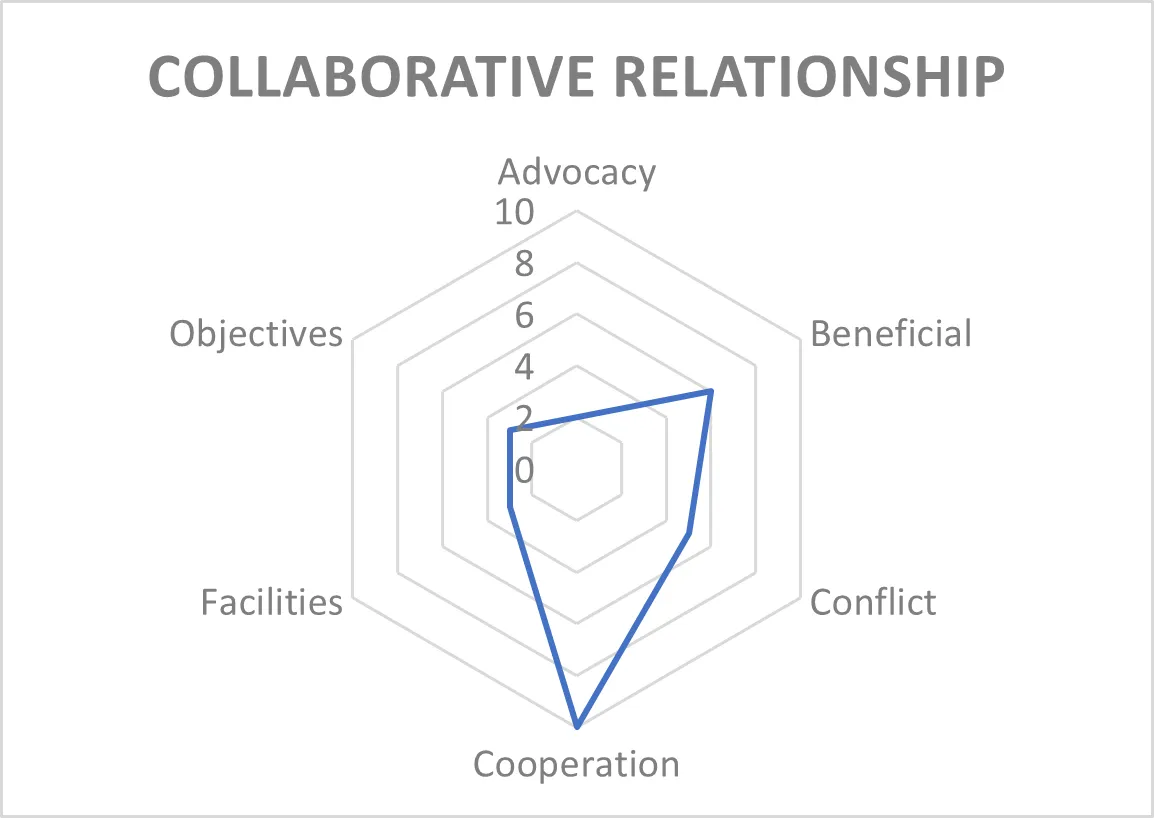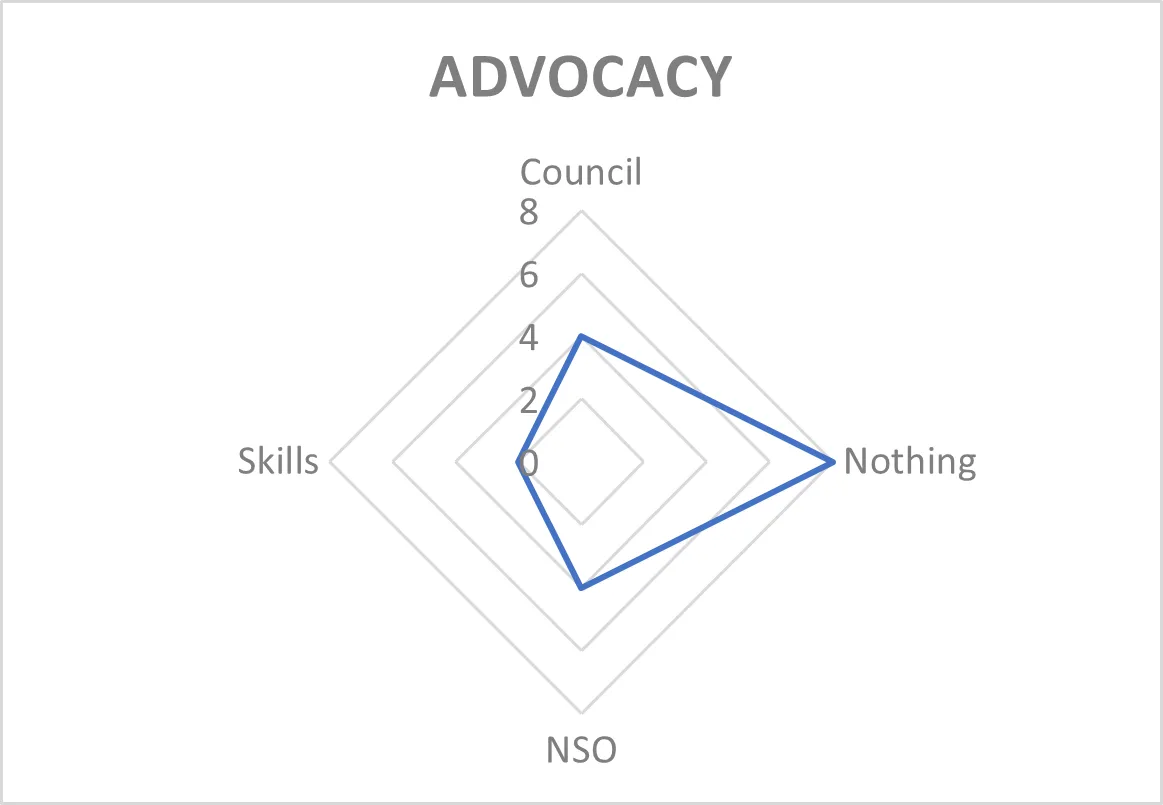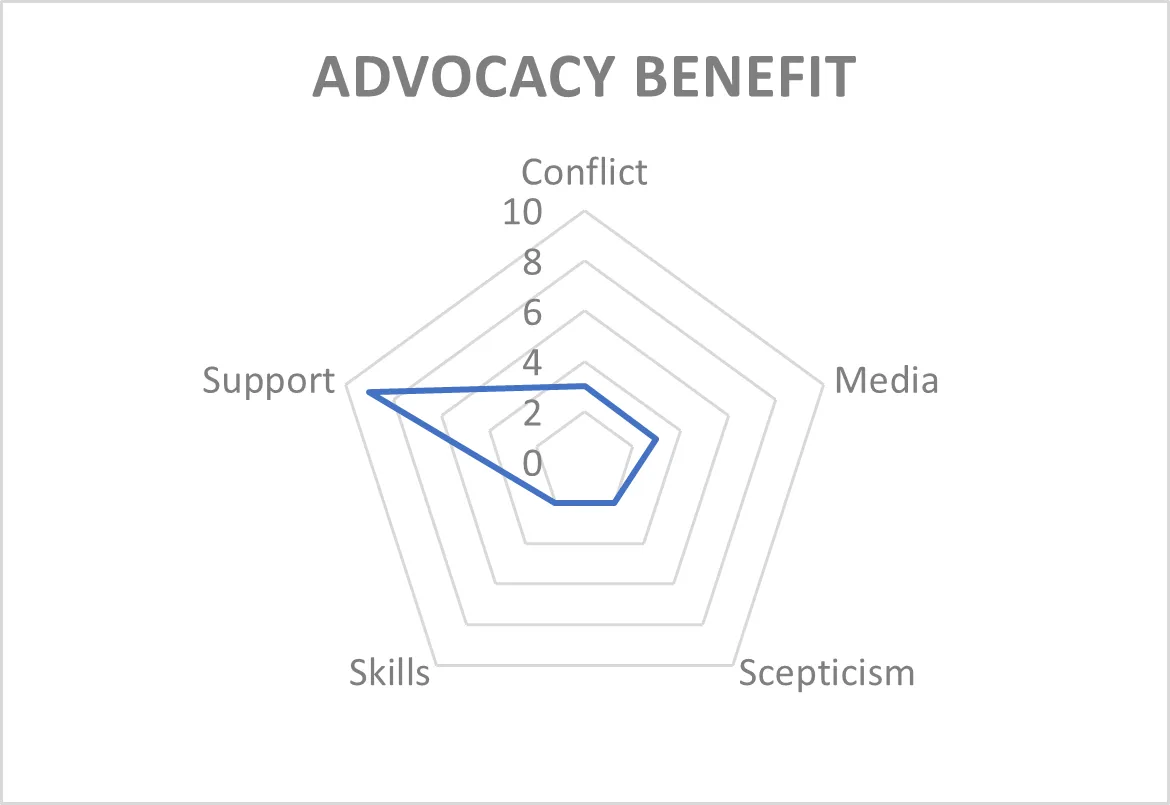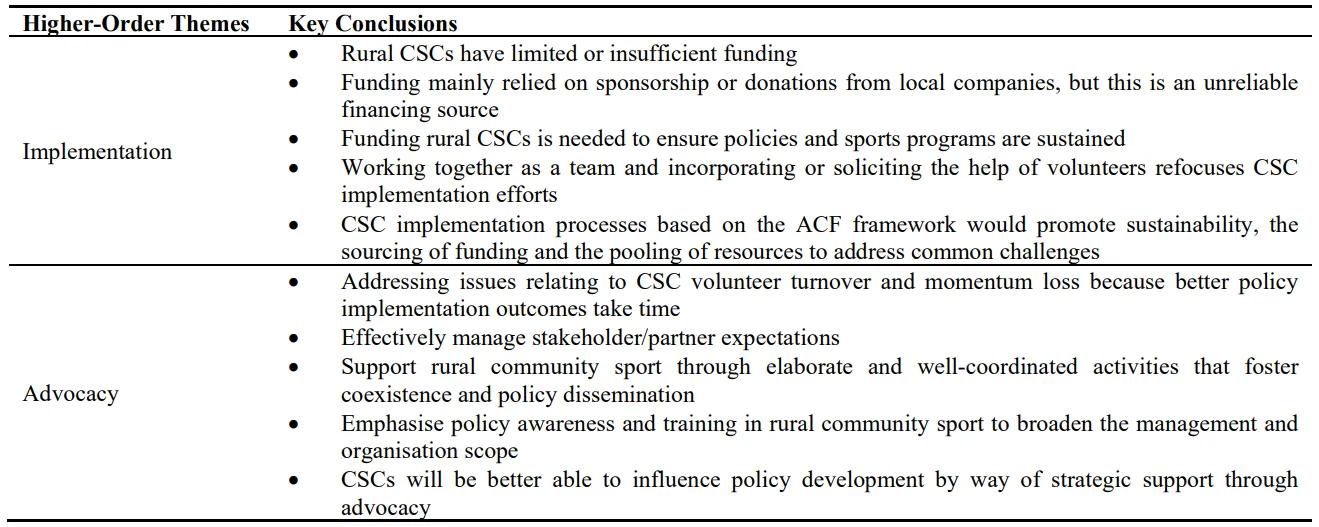Download PDF
Cite This Article
Contents
Community Sport, Australian Sport Policy and Advocacy: A Qualitative Study of Stakeholder Perspectives
Author Information
Other Information
Discipline of Sport and Exercise Science, Faculty of Health, University of Canberra, 11 Kirinari St, Bruce, ACT 2617, Australia
*
Authors to whom correspondence should be addressed.
Received: 03 February 2024 Revised: 01 March 2024 Accepted: 15 March 2024 Published: 22 March 2024
© 2024 The authors. This is an open access article under the Creative Commons Attribution 4.0 International License (https://creativecommons.org/licenses/by/4.0/).
Rural Reg. Dev.
2024,
2(2), 10006;
DOI: 10.35534/rrd.2024.10006
ABSTRACT:
This article explored aspects of the community sport policy process in rural New South Wales, Australia, focusing on the views of community sport club (CSC) officials relating to policy matters. Community sport represents a complicated policy arena, and rural communities face a level of disparity compared with better-resourced urban CSCs, particularly concerning policy implementation and advocacy issues. Officials at CSCs from ten different sports (n = 10) in a rural setting participated in semi-structured interviews to pinpoint themes common in the community sport policy process. Further, the research identified aspects of the connections that impact CSCs, including those with government and National Sporting Organisations (NSOs). To highlight the beliefs and attitudes of the CSC officials, the interviews had two key thematic foci—implementation and advocacy—and the findings highlighted sub-themes relating to the fundamental interests of CSCs. Overall, the research accentuated the hierarchical nature—a power imbalance—of sport policy processes, the potential for CSCs to have a bottom-up role in policy creation, and the consideration of a policy analysis and evaluation structure such as the Advocacy Coalition Framework. Finally, the outcome points to enthusiasm for strengthening community sport by giving CSCs a voice through localized advocacy.
Keywords:
Advocacy; Community sport; Clubs; Policy; Power; Sustainability
1. Introduction
Community sport is the foundation of sporting activity, and community sport clubs (CSCs)—a “cluster of competitive, but not high-performance sports” [1]—have a significant role in providing organized sport for the wider population [2,3]. Though community sport can have “multifarious meanings and diverse applications in different parts of the world” [4], community sport is defined herein as organized physical activity provided by a CSC (or group of CSCs) within a local setting [5]. Set against a complicated backdrop globally, however, it is argued that the community sport policy sector is conflicted, disorganized [6,7,8,9,10,11,12], and “fragmented, fractious and ineffective” [13]. From a general perspective, sport policy is a highly politicized field often subject to legislators’ “whim and caprice” [7]. Further, sport policy represents policy residue [14] that struggles for recognition because its social importance is perhaps less distinct from strategic objectives associated with the economy, education, welfare, and political relations.
In rural Australia, the nature of physical activity and community sport differs from urban community sport [15,16,17,18]. Rural CSCs and the communities they represent, however, have long been shown to be somewhat of an afterthought for policy and government investment in Australia [16,17]. This situation is not unique to sport; most rural sectors would hold such views [19,20,21,22], nor is it unique to Australia [23]. Yet, community sport is the glue that holds communities together [17,24,25], offering a unique opportunity for enhancing social cohesion [4,26,27], and greater opportunities for inclusion [4,28,29,30]. Further, community sport plays a critical role in intimate community settings [28,31] and provides many localized social, political, and economic benefits [4,15,17,32]. From a policy perspective, community sport might, therefore, be considered critical to the architects of sport policy, particularly given that participation in sport and physical activity is of significant value to society [32,33,34,35].
Based on the analysis of interviews, this study sought to identify themes common among CSC officials concerning policy impacting their sport. To determine the principal aspects of the policy process for community sport, the principal focus was on viewpoints of policy implementation and the potential for advocacy. Within that environment, the role of power was considered in relation to policy implementation. To appreciate power imbalances in the policy process, this paper outlines the notion of power because “any discussion of the policy-making process must necessarily be grounded in an extrinsic consideration of the nature of power within the state” [36]. Further, understanding power relations provides the basis for a more robust analysis of policy implementation issues and the potential for a collaborative bottom-up influence of policy. With such context, connecting the dimensions of advocacy requires the application of relevant theory to make sense of the policy process [37,38].
To better understand the interconnected nature of policy processes[39], a key feature of this paper is the potential of meso-level analytical frameworks to help assess power-based relationships between the various stakeholders involved in an Australian rural context. With the following points in mind—power, implementation, and advocacy—and the contemplation of policy frameworks such as the Advocacy Coalition Framework (ACF), the study addresses two key research questions: (1) what examples of specific implementation issues are impacting community sport?; and (2) is there potential to contemplate an advocatorial environment for policy influence and change? This latter question is a fundamental consideration of how policy frameworks like the ACF—and the aspect of bottom-up policy influence—might apply to advocacy for community sport and encourage a more inclusive policy environment from the perspective of CSCs. Overall, the key findings contribute to a greater understanding of CSC concerns and opinions on the viability of localized advocacy and its influence within an Australian rural context.
2. Literature Review
The application of numerous theories—the more, the better [40]—provides a valuable foundation for comprehending issues facing CSCs when considering the policy process and the potential of localized advocacy. The notion of power forms a fundamental initial consideration for this research due to the potential imbalance of influences in policy implementation processes. To support the objectives of this research, the ACF and the potential for bottom-up influence of policy give rise to a situation where perhaps the disparity in power relations becomes less acute.
2.1. Background
In Australia, where there is an historical objective to make sport “more accessible, equitable and fair for all Australians” [41], the complex policy situation presents barriers to that aim. There are numerous concerns for community sport, including scant resources, decreasing participation levels, fluctuations in volunteer numbers, difficulties with diversity, challenges with inclusion, variations in skills desirable for managing CSCs, and problematic policy matters [4,11,28,30,42,43,44,45,46,47,48,49]. Issues facing the community sport environment include, for example, the challenging and unclear position of CSCs in health promotion and broader social responsibilities [28,50].
Such concerns result from, in part, the range of stakeholders involved in policy processes and the access to resources [28,51,52]. For community sport in Australia, such a scenario can, in turn, create a degree of tension for the actors involved in the policy process [28,47,48,53,54]. From a policy process standpoint, friction occurs due to the variation in primary value priorities that influence the policy process [55] and the different social contexts and local conditions that affect the decisions of stakeholders involved in policy [56,57].
Defined as local sport clubs that are primarily non-profit, voluntary, amateur, community, and grassroots sport organisations [58] that provide recreational and competitive sporting opportunities for communities [59], CSCs face perennial resource and finance issues and, invariably turn to predictable methods like sausage sizzles (barbecues or similar) in local shopping precincts to raise funds. CSCs also operate with human capital (i.e., volunteers) that is subject to time constraints and often lack the range of skills required for managing CSCs and thus face constant challenges in pursuing objectives or following a strategic plan [3,9, 60–65].
CSCs operate in an increasingly competitive environment [2] that brings expectations from both government and NSOs to professionalize certain aspects of their activities [66,67]. The complex conditions facing CSCs include the understanding of reasonable governance procedures [68,69], increasing CSC membership and the retention rate, professional and suitably vetted staff, executive boards with relevant skillsets, well-maintained facilities, and modern and functioning equipment [52,70,71]. Further, there is an expectation to keep membership fees low because community sport is costly [72,73]. Yet, with volunteers at the helm [74], CSCs invariably struggle to cover costs and are often year-to-year operations, creating sustainability issues, particularly concerning human and financial resources [75]. In addition, due to CSCs being implementers of policy [76,77,78,79], the challenges facing CSCs give rise to a power imbalance affecting community sport.
2.2. Power
For this investigation, power represents the ability for a key actor to influence the decision-making process in the face of opposition from other actors [80]. Power is ubiquitous at all levels of social relations, no less so at the micro-level [81,82]. From a policy perspective and the impact on power-based relationships, essential norms relate to “the distribution of power at the societal level; the significance of the pursuit and protection of interests; and the relationship between the state and society” [83]. Thus, for community sport, power is construed as a dominant, universal, and pervasive feature of all social relations [84,85]. Individual actors in CSCs, NSOs, and government are connected in numerous ways, so the policy process might, in theory, be based on “the cooperation of a whole network of local and individualized tactics of power in which everybody is involved” [86].
When considering critical stakeholders in the power process, however, namely the government and NSOs, CSCs are ultimately viewed as instruments of sport policy [87,88,89,90]. The organisation ultimately in control of resources (e.g., government and NSOs) can exert power over the resource-seeking organisation (e.g., the CSC) by attaching conditions to, for example, revenue derived from government grants (e.g., content and control) [91]. Reliance upon external revenues such as third-party subsidies can harm the autonomy of CSCs [92,93], as can dependence upon a more traditional and unsophisticated list of opportunities for raising revenue, such as sausage sizzles, collection tin rattling and raffles, which can impact volunteer motivation and increase levels of frustration [94,95,96,97]. Thus, the importance of power in the policy process is referenced in the connection between power and issues that affect grassroots implementation.
2.3. Implementation
For CSCs to consider policy concerns and better realize capacity [74], barriers to implementation need to be considered concerning developing CSC capabilities [49,98]. Implementation is “the process of interaction between the setting of goals and the actions geared to achieve them” [99]. Further, implementation relies on the interaction of actors that are part of a process to work in tandem to deliver the final policy objectives. When it comes to policy implementation, CSCs face various challenges, including an over-reliance on volunteers, financial insecurity, insufficient resources, skills deficit, a poor participation culture, infrastructure issues such as sparse or deteriorating facilities, the relationship between school sport and community sport, difficulties meeting expectations of stakeholders, issues with policy implementation, and problematic relationships with government and NSOs and their objectives [3,49,64,93].
To better understand the policy process involving CSCs, the importance of implementing actors is essential. In the public policy process, consideration of actors and their interaction is crucial to a scenario that differentiates between “government intention and actual results” [100]. Yet, implementation is often a complicated and lengthy procedure between those creating and enacting policy and stakeholders responsible for putting policy into action [101]. Forming a policy-action continuum, key stakeholders such as government, NSOS, and local implementers like CSCs are positioned as theoretically cooperative elements in an adaptive policy process [101]. Policy might thus be construed not as a restrictive factor but a negotiated process “which inevitably undergoes interpretation and modification and, in some cases, subversion” [101]. Such an assertion supports the notion of shaping the preferences of policy actors with the power imbalances that impact policy processes and outcomes [102,103]. For this investigation, the consideration of a policy analysis framework that has the potential to cater to the numerous stakeholders involved in sport policy involving CSCs, such as the ACF, has merit.
2.4. Advocacy Coalition Framework
Within the complex community sport policy ecosystem, CSCs—the policy implementers—face the challenge of a mainly top-down policy process, which can be counter-productive to the policymakers’ objectives [44,76,79]. To better understand policy processes, the potential of meso-level analytical frameworks to help manage the power relations impacting stakeholders is essential. Some constraints relating to meso-level theory include micro-level concerns and intricate matters impacting the implementation processes [36]. From a theoretical perspective, however, analytical frameworks of the policy process help interpret how best to manage stakeholder interests, offering “the very tools to understand the broader questions of public policy” [104]. Further, analytical frameworks offer examples of interconnected ideas [105,106,107], contributing to understanding advocacy and community sport.
In terms of identifying a meso-level theory applicable to advocacy and community sport policy, the ACF provides two key features: (i) It caters for a macro-level assumption that policymaking takes place within sub-systems by specialists whose behaviours are subject to influence from the broader socio-economic and political system [108,109]; and (ii) it considers micro-level observations of individuals facing issues such as limited resources, a distinct feature of community sport and CSCs [64,110], within the sub-system contributing to overall system instability [109,111]. Houlihan (2005) suggests that, for the analysis of sport policy, the ACF has greater application than alternative frameworks and can identify and explain the policy process in an environment often stymied by macro-political motives.
A particular focus of the ACF is the bottom-up influence of the policy process, viewed as crucial because it allows the synthesis of bottom-up input with a more traditional top-down approach to policy creation [108,112,113]. The ACF aims to synthesize top-down and bottom-up aspects of policy [114] and includes practical evidence, technical information, and the subsequent influence on the policy creation and implementation process [55,115]. The ACF comprises two brief distinctions: (i) a top-down process, meaning to commence with a macro-policy directive; and (ii) a bottom-up process, meaning to start with an analysis of actors involved with policy implementation, while understanding that actors often have to manipulate policy to address local conditions [116]. Within that context, it is critical to assess actor attitudes and beliefs as part of the policy process [117].
In community sport, although both top-down and bottom-up management processes can be applied or are viewed as worthy of consideration, in the policy process [118,119], national sport policy creation and implementation is often viewed simplistically as a manageable process of interconnection through a top-down process without concerns about power imbalance or the distortion of relationships [120,121]. Despite the role of a central government sport funding agency like the Australian Sports Commission (an agency of the Australian Federal Government) that, among other things, seeks to create more opportunities for physical activity for Australians [122], sport policy development is ultimately dependent upon several separate organisations cooperating to fulfil policy objectives [123], which can lead to a power imbalance [124].
Accordingly, rather than attempting to analyse matters solely from a top-down perspective in sport, there is merit in considering a bottom-up approach and then reviewing and enacting the opinions of stakeholders in community sport; in other words, take community sport “as the point of departure” [76], gain an understanding of actor attitudes and beliefs [117], and work upwards from that position [36]. Indeed, the lowest point of the implementation process should be where any review of the efficacy of policy processes commences [125,126,127,128] because it offers the opportunity to address the reality of implementation.
3. Method
With the objective of outlining policy implementation issues impacting community sport and the potential for an advocatorial environment to influence policy, the study addressed the research questions by identifying strategic policy challenges for community sport and views on localized support for CSCs. To gain insight from an implementation perspective and the potential for advocacy, interviews were analyzed to classify themes relating to processes influencing policy—including power dynamics impacting CSC relationships—and those relating to creating an advocacy structure. Notably, policy processes—and how they impact stakeholders—are not always apparent and are usually connected to subtle variations in policy and specific experiences or results [129]. Hence, the method applied in this paper seeks, in part, to identify policy nuances based on the experiences of the CSC officials participating in the research.
3.1. Design
The research design adopted a qualitative method through the application of interviews, the most common approach for accumulating qualitative data in sport science [130]. Qualitative research is applied across various sport disciplines and is becoming more mainstream [131], to the point that it has been described as a more authoritative method than a quantitative approach [132,133]. Further, qualitative methods offer a useful way to probe the nuances in participant experiences [134]; simply, semi-structured interviews allow for responses to be explored where quantitative methods do not. Adopting said outlook catered for a better understanding of the lived experience of a specific population group—in this case, the CSC officials - and is based on approaches similar to sport-related research [134,135,136,137,138,139].
The research incorporated ten (10) semi-structured interviews intended to elicit themes - as per the research questions - typical in the community sport policy process. The interview questions (n = 12) focussed on higher-order themes of (a) implementation and (b) advocacy to understand better empirical data with the potential practical application of a policy framework like the ACF. Participants answered questions about government and NSO policy implementation processes and associated outcomes that impacted their CSC. Owing to a likely variation in the understanding of policy and advocacy, participants were e-mailed the guiding questions before the interview to give them time to digest content and expectations. Using open-ended questions allowed the participants to expand their answers during the interviews [140]. Through cautious but precise probing where relevant, the researcher requested participants to elaborate on statements and perspectives that would impact the thematic analysis [141]. Questions were presented individually and specifically to each CSC official. The interview protocol began with informed consent procedures. From an ethical standpoint, all participants were advised of the confidential and voluntary nature of their involvement in the research, which was approved by the University of Canberra Human Research Ethics Committee (project number 20180310, approved 26 September 2018). The interviews were recorded digitally and then transcribed verbatim. All participants were thanked and reminded of the purpose of the research.
3.2. Participants
Interview participants (n = 10) were purposively sampled CSC officials in the Illawarra, NSW, a sufficient number, particularly compared to sampling adopted in comparative research in Australia [142]. Participants were recruited based on their willingness to participate, a situation ascertained by a previous survey response (Authors, submitted) and their position within a CSC. The participants were all senior CSC officials (e.g., President/Secretary/Treasurer) in the following sports: Australian Rules Football, Cricket, Lifesaving, Netball, Soccer, Swimming, Rugby League, Rugby Union, Touch Rugby, and Track & Field Athletics. The sports were selected based on the results of the previously mentioned surveys.
3.3. Measurement
Aligned with the research questions, the interview questions addressed the nature of community sport and policy, and responses were collected in a process that facilitated straightforward content analysis with questions grouped into the two higher-order themes: (i) those with an implementation focus and (ii) those with an advocacy focus. The interview questions are listed in Table 1.The justification process for the type and number of interview questions initially involved framing the questions following direction from qualitative research literature [143,144]. The number of questions (n = 12) was based on the two higher-order themes to maintain a clear focus on each section and kept to this number in recognition of the voluntary participation and to avoid loss of interest/focus [143]. The questions were structural [143] and designed to uncover themes and provide a platform for testing hypotheses [145]. In this instance, the questions offered a sequence toward establishing a clear connection between the Findings and future research opportunities. As already noted, the number of participants was based on sampling adopted in similar research in Australia [142] and the nature of the questions followed examples in other research, including some with an Australian focus [134,135,136,137,138,139]. Finally, a pilot study was conducted involving individuals with characteristics similar to the participants [144]. Input from seven PhD qualified sport academics at the author’s institution was garnered, a process involving several revisions to the questions.
3.4. Data Collection
The data collection occurred using semi-structured interviews conducted face-to-face by the researcher. Interviews ranged between 42–80 min, with a mean duration of 61 min. Semi-structured interviews suited this research project’s requirements due to all CSC participants having different lived experiences of the policy process [146,147]. The conversations were audio-recorded, then transcribed verbatim by an independent transcription service, allowing for the collection of thorough, genuine, and quality data [148].
3.5. Data Analysis
A content analysis procedure was adopted to analyse the interview data. All the data were coded in line with each interview question to identify themes [149]. Each interview encompassed the same questions and a structure in sections and paragraph styles; a code symbolized each question, with the data organized into lower-order themes and sub-themes. The classification for the lower-order themes was based on the overall aim of each question, with examples shown in Table 2. The sub-themes were guided and extracted based on the responses to questions and the critical references made by participants, thus producing the sequence of themes and effecting a logical structure for the data [144,145,150]. The analysis employed NVivo 14 software, a tool frequently applied in qualitative research in health and sport in Australia [142,151,152]. The author coded the data; it is not uncommon for qualitative studies to use a single coder [153]. By way of example, as per Table 2, straightforward labelling (i.e., using ‘Q’ followed by the question number) was applied to each question, which gave rise to a specific lower-order theme.Each interview transcript was then broken down based on the initial codes and lower-order theme, producing sub-themes based on representative quotes from the interview participants [154,155]. The associated probing (where required) in the interviews allowed the author to gain more meaningful responses, thus producing more detailed sub-themes (see Table A1 in the Appendix). To improve reliability, data for each sub-theme is only provided for questions where two or more respondents referred to applicable variables in their responses. This was to ensure data shown in the Findings was more balanced, representative of more than one participant so as to avoid an associated response bias [156], and to point simply to the phenomena being studied based on the qualitative approach to the research [148,157]. In addition, to help visualize the Findings, Figure 1–Figure 12 were produced to provide insight into the most prominent sub-themes.
3.6. Limitations
Regarding the interview participants, it is acknowledged that a degree of bias in responses was possible. Yet, given the research’s overall purpose, the participants provided a sound platform for understanding community sport issues within their community. Indeed, the participants were knowledgeable about community sport and offered various viewpoints and opinions across multiple sports. Gathering the views from the CSC officials allowed for an understanding, albeit limited to a particular geographical region of rural Australia, of the policy implementation process along with the opinions on localized advocacy, alongside the impact of power in CSC relationships.
4. Findings
Delineated initially into the two higher-order themes - implementation and advocacy - the Findings elicit key outcomes and processual anomalies impacting CSCs. The Findings were divided into (a) the initial two higher-order themes, followed by (b) lower-order themes, (c) sub-themes, and (d) sample verbatim responses. In accordance with the lower-order themes relating to each question, the analysis yielded numerous sub-themes for each question. Table A1 in the Appendix highlights each sub-theme, the number of participants referring to a sub-theme and the total number of references. Thereafter, two verbatim responses per sub-theme are shown, along with the sport (a full range of responses are available in the supplementary file). To visualise the Findings for each question under the banner of each higher-order theme, Figure 1–Figure 12 provide details for the frequency of participant responses to each question (the lower-order theme) and the production of the applicable sub-theme. Each figure has a supporting text explanation that elicits the connection between the lower-order theme and the sub-theme(s) for each data set. In Figures 1–6, as follows, detail relating to the Implementation questions is provided.
Q1: What are the challenges faced by your club in the implementation of its plans and activities? Funding, Time, and Volunteers are registered as the dominant sub-themes relating to implementation challenges. Funding provided the most apparent concerns with references to it being the ‘number one’ challenge.
Q2: Where does the club get its funds to run its activities? Sponsorship from third parties is presented as the main sub-theme and critical funding source, along with grants and revenue raised from fundraising events (e.g., annual club dinner). BBQs (e.g., sausage sizzles) were a popular source of funding.
Q3: What policies is your club involved in that support the local community? The overwhelming sub-theme was that connections with the local community were significant, with seven participants referring to the concept.
Q4: What are the strategic policy priorities of your club? How are policies made and implemented within the club? Recruitment is presented as the dominant sub-theme, linked primarily to maintaining/growing club membership to remain sustainable.
Q5: What do you consider are the key issues in relation to growing and sustaining participation in community sport? Following on from Q4 above, sustainability is a stand-out point. Further, interest (the maintenance thereof) is another crucial sub-theme.
Q6: Can you provide details of policies (either local, state or national) that have been problematic to your club? There was a strong response with the dominant sub-theme relating to NSOs and the difficulties for CSCs in addressing/managing policy edicts.
Additional observations in Table A1 in the Appendix provide details of the number of references the participants made in connection with a particular sub-theme. By way of notable example, in the implementation higher-order section, Q1 elicited a strong reaction to the Funding sub-theme, with 15 references to the subject, perhaps unsurprising given the perennial nature of issues surrounding the funding of community sport [158]. For Q2, there was a strong response relating to Grants, which invariably require a vital skill set to complete well [159]. Other notable examples include the issues relating to participation numbers, which impact the sustainability of a CSC, as shown in Q5, and policy issues, which, as per Q6, provoked a very high reaction with 31 responses from eight participants. In Figure 7–Figure 12, as follows, detail relating to the Advocacy questions is provided.Q7: What do you see as the major tensions or challenges in the community sport policy system? The two dominant sub-themes corresponding to policy challenges related to the hierarchical nature of policy and the disconnect clubs felt with their sport overall.
Q8: In what ways do you feel that your club is able to influence (i) national level sport related policy, and (ii) local level sport-related policy? The dominant sub-theme is related to policy (e.g., the hierarchical nature as per Q7 above) and the lack of influence at a local level.
Q9: How does your club address the needs of every stakeholder linked to your club? The dominant sub-themes of player and family demonstrated a key issue for community sport in terms of maintaining interest among members and their families.Q10: How would you view the feasibility of a cooperative relationship with clubs from other sports? The standout sub-theme was the concept of cooperation, notably with all ten participants indicating support for a cooperative environment.
Q11: What examples of advocacy (e.g., representation with a community focus, as opposed to legal representation) has your club benefitted from? Most participants referred to issues with the idea and that, in general, there is a distinct absence of advocacy (i.e., nothing).
Q12: To what extent do you think an advocacy group might benefit your club and community sport as a whole? All participants agreed that advocacy had the potential to help, and the vast majority cited the supportive element as being important.Table A1 in the Appendix provides further details on the number of times participants have referred to a particular sub-theme. In the advocacy higher-order section, Q7 drew attention to concerns about the hierarchical nature of policy impacting CSCs with 15 references to the stratified makeup of sport policy. There were a significant number of references for Q8; a combination of 47 references relating to the ability of CSCs to have any influence over policy, either locally or nationally [76]. Notably, Q10 produced a strong response, with 20 references across all participants, to the potential of cooperation among CSCs, with networks being of clear potential in community sport [160]. In Q12, under the support sub-theme, nine participants made 15 references relating to the benefits of a central body advocating for CSCs.
5. Discussion
Based on the two research questions, this study aimed to illuminate CSC concerns about policy implementation and the significance of an advocacy structure incorporating CSC views. The Findings identified a relationship between implementation and advocacy (higher-order themes) by way of CSCs navigating a hierarchy with an uneven distribution of financial and human resources, implementation issues, the potential bottom-up role of CSCs in policy creation, and consideration of a framework such as the ACF.
Some critical connections between concepts and overarching themes were identified. From a pecuniary perspective, the analysis identified that CSCs lack adequate funding, either directly or indirectly (Q2), a predictable feature of community sport [158]. Further, the results demonstrate that volunteers contribute significantly to community sport development. Regarding parental motivation for volunteering, CSCs rely significantly on support from parents and providing interest in the role is a constant challenge [161,162]. The issue of sustainability arose noticeably in Q4, where it was recognized there were issues with recruitment and interest, both from a volunteer and membership standpoint. Also, when considering the potential for advocacy, the participants noted the potential for a more collaborative approach to issues impacting them (Q10). Further, there is a predominant view advocacy has the potential to help influence the implementation process through coordinated support and a well-defined hierarchy that communicates and liaises with local people.
Notably, when considering the semi-structured nature of the interviews, the sub-themes surfaced at different stages throughout the interview. This finding reflected the problematic nature of each point raised and why, for some participants, there were pressing concerns that overlapped throughout much of the interview. Further, it was clear that several specific factors inhibited the implementation of the policy by CSCs. These include both shared and conflicting values and opinions (especially when considering the government and NSO objectives contrasted with those of CSCs), challenges associated with implementation, such as resource issues and relationships, a lack of discussion regarding the policy process, and insular, top-down approaches to the creation and implementation of policy. Further, the Findings pinpoint specific strategic challenges for CSCs and their views—attitudes and beliefs—on focussed support.
As remarked, the ACF emphasizes systems relating to actor attitudes and beliefs as the fundamental characteristics of the policy process [117]. When considering the Findings under the advocacy higher-order theme, some apparent attitudes were identified. The participants judged that governments and NSOs do not adequately consult CSCs and that there is a clear power imbalance in the policy process [36]. The participants opined that CSCs do not have a voice and are expected/need to increase participation but have limited resources or funding to facilitate this. Concerning beliefs, key issues included a lack of consultation, an absence of significance in the policy process, and a precise scenario highlighting that CSC officials are not policy actors. For CSCs, such beliefs are essential in realising more significant reforms beyond micro-community issues. Based on the sentiment at Q12, for example, the core driver for the participants is the potential for an independent voice to support and guide CSCs.
Regarding the overall Findings under the advocacy higher-order theme, it is appropriate to suggest that ACF offers a platform to address critical advocacy requirements and implementation issues. The Findings suggest that a collective voice is essential and could shift actor beliefs to the point that CSC officials consider their opinions worthy of merit. The upper end of the hierarchy would be obliged to include CSCs as actors in the policy process and consider—and act upon—their viewpoints. Acknowledging the concerns of rural CSCs might be facilitated by a localized/rural association advocating for CSCs in consultation with NSOs and the government, a positive shift away from historically less inclusive policy processes [16,17]. A line of communication from CSC to NSO and government might, at worst, allow for CSC voices to be heard and, at best, influence policy to address CSC concerns.
In achieving potential independent and collective representation, the likelihood is that attitudes will be more favourable as more localized advice and representation could follow. Further, CSC officials might develop an increased capacity to contribute to policy impacting grassroots sport through bottom-up influence and as a result of resources (e.g., funding) flowing to CSCs (the policy implementers). Where policy beliefs were concerned, this was the Achilles heel for CSCs. The potential of a bottom-up focus for an advocacy coalition relies on collective support for this belief. On this very point, however, the key findings indicate there is unanimity with this belief due to the interconnections and relationships between the various sub-themes.
For CSCs, a form of advocacy might impact resource concerns by way of a cooperative relationship with (a) governments and NSOs in terms of policy development and (b) a similarly collaborative relationship with community partners and stakeholders. Such a step would be constructive in potentially addressing the issues surrounding the conflicted, ineffective, and politicized sport policy process [6,7,8,9,10,11,12,13,14], especially the impact on CSCs. Under the umbrella of the ACF, power relations and resource dependency are considered, which may influence policy processes and sustainability. The ACF supports how CSCs might benefit from synchronized and collective activities [163] instead of casual or ad hoc varieties. Indeed, an advocacy coalition may assist with recognising CSCs in the policy process by increasing the stages of formality between CSCs, a development based on the organization’s maturity, budget growth and independence and stronger links with other organisations, particularly at committee or board level [164]. Some specific conclusions that can be drawn from the Findings based on the higher-order themes are listed in Table 3.Overall, the research highlighted the stratified domain—a power imbalance—of sport policy, including resource and implementation issues, the potential bottom-up role of CSCs in policy creation, and considering a policy analysis structure such as the Advocacy Coalition Framework. The outcome of this research points to enthusiasm for strengthening community sport—and communities [17,24,25]—by giving CSCs a voice through localized advocacy, especially from a rural perspective. Relationships and the role of power in communities has the potential to help influence the policy-making process and encourage autonomous capacity for CSCs to have a positive impact on matters directly affecting the local environment and benefitting the local community from social, political, and economic perspectives [4,15,17,32].
5.1. Future Direction
With the preceding context, considering power, implementation, and advocacy provides a platform for acknowledging and acting upon the views of community sport stakeholders, such as CSCs. The research indicates that a better understanding of implementation issues and the ability to influence policy based on an advocacy structure may lead to a greater likelihood for CSCs to achieve capacity [3,74]. In this instance, such capacity might be termed collaborative capacity [164,165,166,167], meaning the collective ability of a group of CSCs to combine various resources to produce constructive outcomes [167]. The hypothesis linked to the ACF is that policy actors such as CSCs will be better able to influence policy development by way of strategic support through advocacy.
Critically, the role of an advocacy coalition may prove a significant force within the sport policy process [49,76,112], especially in the process of “bargaining and negotiation over the control of resources’’ [101]. Further, an advocacy coalition involved with otherwise stretched CSCs may help focus resources and efforts within community sport [74]. Notably, several studies support the ACF as a potentially helpful framework for policy analysis in sport settings [168,169,170,171,172]. Indeed, the ACF serves as a “valuable starting point for the development of analytical frameworks capable of illuminating the sport policy area” [170] and provides sufficient merit and utility for its application as an analytical framework for sport policy [14,168,169,173].
For progress to be made in connection with policy processes involving community sport in rural communities, particularly due to the nature of the sector [15,16,17,18], governments and NSOs will likely need to have improved comprehension of CSC resource structures. Further, exploration of the potential to develop external relationships with various community institutions [64] might be considered because these relationships can be fostered based on a reciprocal understanding of the scarcity of resources [90,93,174,175]. There is the potential for CSCs to establish relationships with other institutions [176,177,178] due to the aforementioned scant resources [49,64,90,93,174,175]. It was noted that CSCs also formed strategic alliances to improve access to resources [179,180]. An increase in reliance upon external resources, however, increases the dependence on other organisations and consequently decreases the autonomy of CSCs [181].
Comprehending the impact of the interview outcomes with issues in the community sport policy process, this research has demonstrated that an advocative approach to community sport policy in a rural environment may help with the management and policy challenges facing CSCs. Indeed, the analysis herein provides evidence of support for advocacy concerning community sport policy and a more inclusive approach to policy creation. Based on the two higher-order themes probed in the research, Table 4 below is proffered as a broad conceptual pathway for the consideration for advocacy in community sport policy processes connected with each of the findings.In conjunction with the ACF’s focus on incorporating the impact of attitudes and beliefs, the themes identified in this research point to the potential for the practical application of a policy framework. The research outcome highlights two key points: first, the interview data blends with that identified in the literature and supports a practical intervention through localized advocacy; second, it provides topical testimony that the policy process involving community sport is complicated. When judging the issues impacting CSCs, theoretical factors based on advocacy offer insight and pathways for improvement [37,38]. Indeed, when considering advocacy in community sport, future sport policy research would benefit from contemplating frameworks connecting organizations directly with policy processes [39].
To that end, to move from a theoretical position and to establish empirical evidence based on the Findings, there is merit in operationalizing a coordinated approach through localized collaboration for community sport [76,112,182,183,184]. This proposal would comprise creating a coalition of rural CSCs to actively shape community sport policy from a bottom-up perspective. Future research might seek to establish an alliance within a rural community to test the potential of CSCs advocating for their interests. This approach would help illuminate the reality of implementation and help address or manage the issues facing CSCs. From an ACF perspective, the impact of an advocacy coalition would be demonstrated by the reciprocal accord between the CSCs and their separate but ultimately collective characteristics [163]. In so doing, advocacy in a rural setting would serve to mitigate the otherwise reduced policy focus in rural communities [16,17], increase the likelihood of localized sport strengthening communities [17,24,25], enhance social cohesion and inclusion [4,26,27,28,29,30], and generally improve social, political, and economic benefits [4,15,17,32].
6. Conclusions
Through the application of interviews, this paper has identified the views of CSC officials on various matters of concern, including funding problems, resource issues, hierarchical pressure, and support (or lack thereof) from an Australian rural context. Applying theoretical perspectives helps to understand the phenomena and illuminate potential opportunities for an improved policy process[39]. Collectively, the Findings of this study point to policy issues that impact CSCs and their ability to remain sustainable in an ecosystem fraught with challenges. The research drew attention to the power imbalance in the sport policy process, implementation issues for CSCs, and the potential bottom-up role of CSCs in policy creation and evaluation [76,77,78,79]. Within such a complex environment, localized advocacy for CSCs may be an avenue for addressing policy implementation issues, especially from a rural perspective. Future research might seek to establish a collaborative structure for rural CSCs and observe its efficacy in addressing the challenges facing CSCs.
Based on the objectives of this investigation, the ACF is proffered as a robust model for application to the community sport policy process. The ACF encourages policy input based on a top-down/bottom-up basis and offers the potential to understand what is essential for advocacy at a localized level. In support of these points, with the rural community in mind, the data gathered for this research can provide clarity to (i) the attitudes and beliefs of key individuals from a bottom-up perspective and (ii) the potential for a collective, inclusive approach to policy creation and implementation—an advocacy coalition. The interview findings indicate that, in a rural setting, there is a clear appetite for bottom-up policy influence by giving CSCs a voice through localized advocacy. As per Houlihan (2005,2016), Fahlén & Skille (2017), Halkyard (2019), and Jedlicka (2022), the ACF offers significant utility as a framework for the exploration of sport policy and application of advocacy.
Appendix
Table A1. Sub-Themes, Participants, & References.
Author Contributions
The author completed all stages of the research and writing independently and without input/contribution from third parties.
Ethics Statement
Approved by the University of Canberra Human Research Ethics Committee (project number 20180310).
Informed Consent Statement
Informed consent was obtained from all subjects involved in the study.
Funding
This research received no external funding.
Declaration of Competing Interest
The author declares no conflict of interest.
Data Availability Statement
NVivo dataset available at doi:10.17632/xcd89fx922.1.
References
1.
Green M, Houlihan B. Advocacy coalitions and elite sport policy change in Canada and the United Kingdom. Int. Rev. Sociol. Sport 2004, 39, 387–403. [Google Scholar]
2.
Rossi L, Feiler S, Dallmeyer S, Breuer C. Organizational capacity building in non-profit sport clubs: exploring the role of competition as a capacity building stimulus. Eur. Sport Manag. Q. 2023, 1–19, doi:10.1080/16184742.2023.2203191
3.
Doherty A, Cuskelly G. Organizational capacity and performance of community sport clubs. J. Sport Manag. 2019, 34, 240–259. [Google Scholar]
4.
Schaillée H, Haudenhuyse R, Bradt L. Community sport and social inclusion: International perspectives. Sport Soc. 2019, 22, 885–896. [Google Scholar]
5.
Pedersen PM, Thibault L. Contemporary Sport Management; Human Kinetics: Champaign, IL, USA. 2018.
6.
Green M. An Analysis of Elite Sport Policy Change in Three Sports in Canada and the United Kingdom; Loughborough University: Loughborugh, UK, 2003.
7.
Houlihan B, White A. The Politics of Sports Development: Development of Sport or Development through Sport? Psychology Press: London, UK 2002.
8.
McDonald I. Sport for All-‘RIP’. A political critique of the relationship between national sport policy and local authority sports development in London. Publ. Leis. Stud. Assoc. 1995, 55, 71–94. [Google Scholar]
9.
Misener K, Doherty A. Understanding capacity through the processes and outcomes of interorganizational relationships in nonprofit community sport organizations. Sport Manag. Rev. 2013, 16, 135–147. [Google Scholar]
10.
Roche M. Sport and community: Rhetoric and reality in the development of British sport policy. In Sport, Culture and Politics; Binfield JC, Stevenson J, Eds; Sheffield Academic Press: Sheffield, UK, 1993; pp. 72–112.
11.
Shilbury D. Considering future sport delivery systems. Sport Manag. Rev. 2000, 3, 199–221. [Google Scholar]
12.
Skille EÅ. Community and sport in Norway: Between state sport policy and local sport clubs. Int. J. Sport Policy Polit. 2015, 7, 505–518. [Google Scholar]
13.
Houlihan B, Green M. Modernization and sport: The reform of Sport England and UK Sport. Public Adm. 2009, 87, 678–698. [Google Scholar]
14.
Houlihan B. Sport policy making. In Routledge Handbook of Sport and Politics; Routledge: London, UK, 2016; pp. 16–27.
15.
Tonts M, Atherley K. Competitive sport and the construction of place identity in rural Australia. Sport Soc. 2010, 13, 381–398. [Google Scholar]
16.
Tonts M, Atherley K. Rural restructuring and the changing geography of competitive sport. Aust. Geogr. 2005, 36, 125–144. [Google Scholar]
17.
Spaaij R. The glue that holds the community together? Sport and sustainability in rural Australia. Sport Soc. 2009, 12, 1132–1146. [Google Scholar]
18.
Berry NM, Coffee NT, Nolan R, Dollman J, Sugiyama T. Neighbourhood environmental attributes associated with walking in south Australian adults: Differences between urban and rural areas. Int. J. Environ. Res. Public Health 2017, 14, 965. [Google Scholar]
19.
Holden R, Zhang J. The Economic Impact of Improving Regional, Rural & Remote Education in Australia; Gonski Intitute for Education, UNSW Sydney: Sydney, Australia, 2018.
20.
Eversole R, Walo M. Leading and following in Australian regional development: Why governance matters. Reg. Sci. Policy Pract. 2020, 12, 291–302. [Google Scholar]
21.
Lane MS, Tiwari S, Alam K. The supply and use of broadband in rural Australia: An explanatory case study of the western downs region. Aust. J. Inf. Syst. 2016, 20. doi:10.3127/ajis.v20i0.1202.
22.
Shortall S, Alston M. To rural proof or not to rural proof: A comparative analysis. Polit. Policy 2016, 44, 35–55. [Google Scholar]
23.
Rich K, Misener L. Playing on the periphery: Troubling sport policy, systemic exclusion and the role of sport in rural Canada. Sport Soc. 2019, 22, 1005–1024. [Google Scholar]
24.
Spaaij R. The ambiguities of sport and community engagement. Ethos 2012, 21, 8–11. [Google Scholar]
25.
MacCarthy M, Morgan A, Lambert C. Congregating as a social phenomenon; the social glue that binds. Int. J. Event Festiv. Manag. 2022, 13, 235–246. [Google Scholar]
26.
Moustakas L. Sport for Social Cohesion: Transferring from the Pitch to the Community? Soc. Sci. 2022, 11, 513. [Google Scholar]
27.
Schulenkorf N, Sherry E, Rowe K. Sport for development: An integrated literature review. J. Sport Manag. 2016, 30, 22–39. [Google Scholar]
28.
Robertson J, Eime R, Westerbeek H. Community sports clubs: are they only about playing sport, or do they have broader health promotion and social responsibilities? Ann. Leis. Res. 2019, 22, 215–232. [Google Scholar]
29.
Doherty A, Millar P, Misener K. Return to community sport: Leaning on evidence in turbulent times. Manag. Sport Leis. 2022, 27, 7–13. [Google Scholar]
30.
Frisby W, Ponic P. Sport and social inclusion. In Sport Policy in Canada; University of Ottawa Press: Ottawa, Ontario, Canada, 2013; pp. 381–403.
31.
Zhou L, Wang JJ, Chen X, Cianfrone B, Pifer ND. Community-sport service provision, participant satisfaction, and participation. Int. J. Sport Mark. Spons. 2019, 21, 127–147. [Google Scholar]
32.
Tonts M. Competitive sport and social capital in rural Australia. J. Rural Stud. 2005, 21, 137–149. [Google Scholar]
33.
de Jong J, Kubbinga C, Selker J, Leistra S, Pruim A. Sport, Physical Education and Coaching in Health (SPEACH): SPEACH: supporting physical education teachers and sports coaches to promote an active and healthy lifestyle. Available online: http://speach.hanze.nl/ (accessed on 1 February 2024).
34.
Simon RL. Internalism and internal values in sport. J. Philos. Sport 2000, 27, 1–16. [Google Scholar]
35.
Collins MF, Collins M, Kay T. Sport and Social Exclusion; Routledge: London, UK, 2014.
36.
Hill M, Hupe P. Implementing Public Policy, 2nd ed.; Sage: London, UK, 2009.
37.
Cairney P. Understanding public policy: Theories and issues. Publ. Adm. 2013, 91, 782–793. [Google Scholar]
38.
Howlett M, McConnell A, Perl A. Weaving the fabric of public policies: comparing and integrating contemporary frameworks for the study of policy processes. J. Comp. Pol. Anal. Res. Pract. 2016, 18, 273–289. [Google Scholar]
39.
Strittmatter A-M, Stenling C, Fahlén J, Skille E. Sport policy analysis revisited: the sport policy process as an interlinked chain of legitimating acts. Int. J. Sport Policy Polit. 2018, 10, 621–635. [Google Scholar]
40.
Mintzberg H. Developing Theory about the Development of Theory. In Great Minds in Management: The Process of Theory Development; Oxford University Press: Oxford, UK, 2005; pp. 355–372.
41.
Cashman R. Paradise of Sport: A History of Australian Sport; Walla Walla Press: Sydney, Australia, 2010.
42.
Eime R, Harvey J, Charity M, Payne W. Population levels of sport participation: Implications for sport policy. BMC Publ. Health 2016, 16, 752. [Google Scholar]
43.
Nichols G, Wicker P, Cuskelly G, Breuer C. Measuring the formalization of community sports clubs: Findings from the UK, Germany and Australia. Int. J. Sport Policy Polit. 2015, 7, 283–300. [Google Scholar]
44.
Shilbury D, Karg A, Rowe K, Phillips P. Sport Management in Australia: An Organisational Overview; Routledge: London, UK, 2020.
45.
Jeanes R, Spaaij R, Magee J, Farquharson K, Gorman S, Lusher D. ‘Yes we are inclusive’: Examining provision for young people with disabilities in community sport clubs. Sport Manag. Rev. 2018, 21, 38–50. [Google Scholar]
46.
Jenkin, C., Eime R, van Uffelen J, Westerbeek H. How to re-engage older adults in community sport? Reasons for drop-out and re-engagement. Leisure Stud. 2021, 40, 441–453. [Google Scholar]
47.
Bauman AE, Nau T, Cassidy S, Gilbert S, Bellew W, Smith BJ. Physical activity surveillance in Australia: standardisation is overdue. Aust. N. Z. J. Public Health 2021, 45, 189–192. [Google Scholar]
48.
Spaaij R, Magee J, Farquharson K, Gorman S, Jeanes R, Lusher D, et al. Diversity work in community sport organizations: Commitment, resistance and institutional change. Int. Rev. Sociol. Sport 2018, 53, 278–295. [Google Scholar]
49.
Mountifield C, Sharpe S. COVID-19 and the Decline of Volunteers in Australian Community Sport: Solutions to Move Forward. In Research Handbook on Sport and COVID-19; Edward Elgar Publishing: Northampton, MA, USA, 2022; pp. 312–327.
50.
Schulenkorf N, Siefken K. Managing sport-for-development and healthy lifestyles: The sport-for-health model. Sport Manag. Rev. 2019, 22, 96–107. [Google Scholar]
51.
Van der Veken K, Lauwerier E, Willems SJ. How community sport programs may improve the health of vulnerable population groups: A program theory. Int. J. Equity. Health 2020, 19, 1–12. [Google Scholar]
52.
Jeanes R, Spaaij R, Penney D, O’Connor J. Managing informal sport participation: tensions and opportunities. Int. J. Sport Policy P. 2019, 11, 79–95. [Google Scholar]
53.
Veal A, Toohey K, Frawley S. Sport participation, international sports events and the ‘trickle-down effect’. J. Policy Res. Tour. Leis. Events 2019, 11, s3–s7. [Google Scholar]
54.
Stylianou M, Hogan A, Enright E. Youth sport policy: The enactment and possibilities of ‘soft policy’in schools. Sport Educ. Soc. 2019, 24, 182–194. [Google Scholar]
55.
Jenkins-Smith HC, Sabatier PA. The advocacy coalition framework: An assessment. Theor. Policy Process 1999, 118, 117–166. [Google Scholar]
56.
Hjern B, Porter DO. Implementation structures: A new unit of administrative analysis. In Realizing Social Science Knowledge; Springer: Berlin, Germany, 1983; pp. 265–277.
57.
Marsh D, Smith M. Understanding policy networks: towards a dialectical approach. Political Stud. 2000, 48, 4–21. [Google Scholar]
58.
Cuskelly G. Volunteering in community sport organizations: Implications for social capital. In Sport and Social Capital; Routledge: London, UK, 2008; pp. 187–203.
59.
Doherty A, Misener K. Community sport. In Sport and Social Capital; Routledge: London, UK, 2008; p. 113.
60.
Garvey D. Identification and impact of interorganizational dynamics faced by small nonprofits operating in collaborations. In Paper Presented at the 35th Annual Conference Association for Research on Nonprofit Organizations and Voluntary Action, Chicago, USA, 16–18 November 2006.
61.
Gumulka G, Hay S, Lasby D. Building Blocks for Strong Communities; Human Resources and Social Development Canada: Toronto, ON, Canada, 2006.
62.
Light R. Coaches’ experiences of Game Sense: Opportunities and challenges. Phys. Educ. Sport Pedag. 2004, 9, 115–131. [Google Scholar]
63.
Rochester C. The role of boards in small voluntary organisations. In The Governance of Public and Non-Profit Organisations: What Do Boards Do; Routledge: London, UK, 2003; pp. 127–142.
64.
Wicker P, Breuer C. Scarcity of resources in German non-profit sport clubs. Sport Manag. Rev. 2011, 14, 188–201. [Google Scholar]
65.
Swierzy P, Wicker P, Breuer C. The impact of organizational capacity on voluntary engagement in sports clubs: A multi-level analysis. Sport Manag. Rev. 2018, 21, 307–320. [Google Scholar]
66.
Hill S, Kerr R, Kobayashi K. Around the kitchen-table with Bourdieu: understanding the lack of formalization or professionalization of community sports clubs in New Zealand. Sport Soc. 2021, 24, 115–130. [Google Scholar]
67.
Spaaij R, Knoppers A, Jeanes R. “We want more diversity but…”: Resisting diversity in recreational sports clubs. Sport Manag. Rev. 2020, 23, 363–373. [Google Scholar]
68.
Geeraert A. A rational choice perspective on good governance in sport: The necessity of rules of the game. In Good Governance in Sport; Routledge: London, UK, 2021; pp. 15–29.
69.
Tacon R, Walters G. The promises and pitfalls of codification of governance in sport as legitimacy work. In Good Governance in Sport; Routledge: London, UK, 2021; pp. 221–235.
70.
Parent MM, Hoye R. The impact of governance principles on sport organisations’ governance practices and performance: A systematic review. Cogent. Soc. Sci. 2018, 4, 1503578. [Google Scholar]
71.
Chappelet J-L, Mrkonjic M. Assessing sport governance principles and indicators. In Research Handbook on Sport Governance; Edward Elgar Publishing: Cheltenham, UK, 2019; pp. 10–28.
72.
Cuskelly G. Volunteer retention in community sport organisations. Eur. Sport Manag. Q. 2004, 4, 59–76. [Google Scholar]
73.
Edwards MB, Rowe K. Managing sport for health: An introduction to the special issue. Sport Manag. Rev. 2019, 22, 1–4. [Google Scholar]
74.
Doherty A, Misener K, Cuskelly G. Toward a multidimensional framework of capacity in community sport clubs. Nonprofit Volunt. Sec. Q. 2014, 43, 124S–142S. [Google Scholar]
75.
Hoye R, Cuskelly G, Auld C, Kappelides P, Misener K. Sport Volunteering; Routledge: London, UK, 2019.
76.
Skille EÅ. Understanding sport clubs as sport policy implementers: a theoretical framework for the analysis of the implementation of central sport policy through local and voluntary sport organizations. Int. Rev. Sociol. Sport 2008, 43, 181–200. [Google Scholar]
77.
May C. Towards a general theory of implementation. Implement. Sci. 2013, 8, 18. [Google Scholar]
78.
Donaldson A, Leggett S, Finch CF. Sports policy development and implementation in context: researching and understanding the perceptions of community end-users. Int. Rev. Sociol. Sport 2012, 47, 743–760. [Google Scholar]
79.
Skille E, Stenling C. Inside-out and outside-in: Applying the concept of conventions in the analysis of policy implementation through sport clubs. Int. Rev. Sociol. Sport 2018, 53, 837–853. [Google Scholar]
80.
Horne J, Tomlinson A, Whannel G. Understanding Sport: An Introduction to the Sociological and Cultural Analysis of Sport; Routledge: London, UK, 1999.
81.
Foucault M, Faubion JD. Power: Essential Works of Foucault, 1954–1984. Vol. 3; Penguin: London, UK, 2000.
82.
Conway JM, Osterweil M, Thorburn E. Theorizing Power, Difference and the Politics of Social Change: Problems and Possibilities in Assemblage Thinking (Introductory Essay). Stud. Soc. Justice 2018, 12, 1–18. [Google Scholar]
83.
Houlihan B, Lindsey I. Networks and partnerships in sports development. In Management of Sports Development; Routledge: London, UK. 2008; pp. 225–241.
84.
Hindess B. Discourses of Power: from Hobbes to Foucault; Wiley-Blackwell: Hoboken, NJ, USA, 1996.
85.
Foucault M. The subject and power. Crit. Inq. 1982, 8, 777–795. [Google Scholar]
86.
O’Farrell C. Michel Foucault; Sage Publications: London, UK, 2005; pp. 164–168.
87.
Stenling C. The Drive for Change: Putting the Means and Ends of Sport at Stake in the Organizing of Swedish Voluntary Sport; Umeå University: Umeå, Sweden, 2015.
88.
Skille EÅ. State sport policy and voluntary sport clubs: The case of the Norwegian sports city program as social policy. Eur. Sport Manag. Q. 2009, 9, 63–79. [Google Scholar]
89.
Edwards JR, Mason DS, Washington M. Institutional pressures, government funding and provincial sport organisations. Int. J. Sport Manag. Market. 2009, 6, 128–149. [Google Scholar]
90.
Slack T, Hinings B. Institutional pressures and isomorphic change: An empirical test. Organ. Stud. 1994, 15, 803–827. [Google Scholar]
91.
Sotiriadou P, Wicker P. Community sports clubs’ responses to institutional and resource dependence pressures for government grants. Ann. Leis. Res. 2013, 16, 297–314. [Google Scholar]
92.
Salancik GR, Pfeffer J. The External Control of Organizations: A Resource Dependence Perspective; Harper & Row: New York, NY, USA, 1978.
93.
Wicker P, Breuer C. How the economic and financial situation of the community affects sport clubs’ resources: Evidence from multi-level models. Int. J. Financ. Stud. 2015, 3, 31–48. [Google Scholar]
94.
Sheptak RD, Menaker BE. The frustration factor: Volunteer perspectives of frustration in a sport setting. VOLUNTAS: Int. J. Volunt. Nonprof. Organ. 2016, 27, 831–852. [Google Scholar]
95.
Linnell D. Evaluation of Capacity Building: Lessons from the Field Alliance for Nonprofit Management; DQCall: Washington, DC, USA, 2003.
96.
Taylor T, Darcy S, Hoye R, Cuskelly G. Using psychological contract theory to explore issues in effective volunteer management. Eur. Sport Manag. Q. 2006, 6, 123–147. [Google Scholar]
97.
Bang H, Ross S, Reio TG. From motivation to organizational commitment of volunteers in non‐profit sport organizations: The role of job satisfaction. J. Manag. Devel. 2013, 31, 96–112. [Google Scholar]
98.
Millar P, Doherty A. Readiness to build capacity in community sport organizations. Manag. Sport Leis. 2021, 26, 1–19. [Google Scholar]
99.
Pressman JL, Wildavsky A. Implementation: How Great Expectations in Washington Are Dashed in Oakland; University of California Press: Los Angeles, CA, USA, 1984; Volume 708.
100.
O’Toole LJ. Rational choice and policy implementation: Implications for interorganizational network management. Am. Rev. Public Adm. 1995, 25, 43–57. [Google Scholar]
101.
Barrett S, Fudge C. Policy and Action: Essays on the Implementation of Public Policy; Methuen: London, UK, 1981.
102.
Stokman FN, Zeggelink EP. Is politics power or policy oriented? A comparative analysis of dynamic access models in policy networks. J. Math. Sociol. 1996, 21, 77–111. [Google Scholar]
103.
Dewulf A, Elbers W. Power in and over cross-sector partnerships: Actor strategies for shaping collective decisions. Adm. Sci. 2018, 8, 43. [Google Scholar]
104.
Birkland TA. An Introduction to the Policy Process: Theories, Concepts, and Models of Public Policy Making; Routledge: London, UK, 2019.
105.
Hicks D, Slaughter R. World Yearbook of Education 1998: Futures Education; Routledge: London, UK, 2012.
106.
Lavie D. The interconnected firm: Evolution, strategy, and performance. In Dissertations Available from ProQuest; University of Pennsylvania: Philadelphia, PA, USA, 2004.
107.
Daft RL, Lewin AY. Perspective—Rigor and relevance in organization studies: Idea migration and academic journal evolution. Organ. Sci. 2008, 19, 177–183. [Google Scholar]
108.
Wellstead A. Plus ça Change, Plus C’est La Même Chose? A review of Paul Sabatier’s “An advocacy coalition framework of policy change and the role of policy-oriented learning therein”. Policy Sci. 2017, 50, 549–561. [Google Scholar]
109.
Sabatier PA. An advocacy coalition framework of policy change and the role of policy-oriented learning therein. Policy Sci. 1988, 21, 129–168. [Google Scholar]
110.
Grix J, Brannagan PM, Grimes H, Neville R. The impact of Covid-19 on sport. Int. J. Sport Policy Politic 2020, 13, 1–12. [Google Scholar]
111.
Cisneros P. The Advocacy Coalition Framework. In Oxford Research Encyclopedia of Politics; Oxford University Press: Oxford, UK, 2016.
112.
Pierce JJ, Giordono LS, Peterson HL, Hicks KC. Common approaches for studying advocacy: Review of methods and model practices of the Advocacy Coalition Framework. Soc. Sci. J. 2020, 59, 139–158. [Google Scholar]
113.
Jenkins-Smith HC, Sabatier PA. Evaluating the advocacy coalition framework. J. Public Policy 1994, 14, 175–203. [Google Scholar]
114.
Sabatier PA. Policy change over a decade or more. Policy Change Learn. 1993, 13, 33. [Google Scholar]
115.
Sabatier PA. The advocacy coalition framework: revisions and relevance for Europe. J. Eur. Public Policy 1998, 5, 98–130. [Google Scholar]
116.
Sabatier PA. Top-down and bottom-up approaches to implementation research: A critical analysis and suggested synthesis. J. Public Policy 1986, 6, 21–48. [Google Scholar]
117.
Jenkins-Smith HC, Nohrstedt D, Weible CM, Sabatier PA. The advocacy coalition framework: Foundations, evolution, and ongoing research. Theor. Policy Process 2014, 3, 183–224. [Google Scholar]
118.
Hylton K, Totten M. Community sports development. In Sports Development: Policy, Process and Practice; Routledge: London, UK, 2008; pp. 77–117.
119.
Book K, Svanborg Eden G. Malmö–the skateboarding city: A multi-level approach for developing and marketing a city through user-driven partnerships. Int. J. Sport Mark. Spons. 2021, 22, 164–178. [Google Scholar]
120.
King N. Sport Policy and Governance: Local Perspectives; Elsevier Butterworth-Heinemann: Oxford, UK, 2009.
121.
Aucoin P. Administrative reform in public management: paradigms, principles, paradoxes and pendulums. Governance 1990, 3, 115–137. [Google Scholar]
122.
Blood G. The relationship between the Australian Olympic committee and the Australian sports commission. Sport. Tradit. 2018, 35, 55–77. [Google Scholar]
123.
Sam MP, Jackson SJ. Sport policy development in New Zealand: Paradoxes of an integrative paradigm. Int. Rev. Sociol. Sport 2004, 39, 205–222. [Google Scholar]
124.
Eichberg H. Sport Cooperation Between Denmark and Tanzania: Development and Recognition. In Bodily Democracy; Routledge: London, UK, 2015; pp. 235–256.
125.
Elmore RF. Forward and Backword Mapping: Reversible Logic in the Analysis of Public Policy. In Policy Implementation in Federal and Unitary Systems; Springer: New York City, NY, USA 1985; pp. 33–70.
126.
Elmore R. Backward Mapping: Implementation Research and Policy Decision. In Studying Implementation: Methodological and Administrative Issues; Chatham Publishing: Chatham, NJ, USA, 1982.
127.
Sætren H, Hupe PL. Policy implementation in an age of governance. In The Palgrave Handbook of Public Administration and Management in Europe; Springer: New York City, NY, USA, 2018; pp. 553–575.
128.
Elmore RF. Backward mapping: Implementation research and policy decisions. Polit. Sci. Q. 1979, 94, 601–616. [Google Scholar]
129.
Sayer RA. Method in Social Science: A Realist Approach; Psychology Press: London, UK, 1992.
130.
Smith B, Sparkes AC. Interviews: Qualitative interviewing in the sport and exercise sciences. In Routledge Handbook of Qualitative Research in Sport and Exercise; Routledge: London, UK, 2016; pp. 125–145.
131.
Evans AB, Barker-Ruchti N, Blackwell J, Clay G, Dowling F, Frydendal S. Qualitative research in sports studies: challenges, possibilities and the current state of play. Eur. J.Sport Soc. 2021, 18, 1–17. [Google Scholar]
132.
Pringle R, Falcous M. Transformative research and epistemological hierarchies: Ruminating on how the sociology of the sport field could make more of a difference. Int. Rev. Sociol. Sport 2018, 53, 261–277. [Google Scholar]
133.
Ronkainen NJ, Wiltshire G. Rethinking validity in qualitative sport and exercise psychology research: A realist perspective. Int. J. Sport Exercise Psychol. 2021, 19, 13–28. [Google Scholar]
134.
Morgan AM, Fernandez CE, Terry MA, Tjong V. A qualitative assessment of return to sport in collegiate athletes: does gender matter? Cureus 2020, 12, 9689. [Google Scholar]
135.
Guevara SA, Donaldson A, Keegan RJ, Appaneal RN, Smyth EA. Waddington G. Stakeholder insights into athlete attrition in the high-performance pathway. J. Sci. Med. Sport 2022, 25, 755–763. [Google Scholar]
136.
Mansfield L, Kay T, Anokye N, Fox-Rushby J. A qualitative investigation of the role of sport coaches in designing and delivering a complex community sport intervention for increasing physical activity and improving health. BMC Public Health 2018, 18, 1196. [Google Scholar]
137.
McCall A, Wolfberg A, Ivarsson A, Dupont G, Larocque A, Bilsborough J. A Qualitative Study of 11 World-Class Team-Sport Athletes’ Experiences Answering Subjective Questionnaires: A Key Ingredient for ‘Visible’ Health and Performance Monitoring? Sports Med. 2023, 53, 1085–1100. [Google Scholar]
138.
Jakobsson BT, Lundvall S. Learn, have fun and be healthy! An interview study of swedish teenagers’ views of participation in club sport. Int. J. Environ. Res. Public Health 2021, 18, 6852. [Google Scholar]
139.
Kappelides P, Spoor J. Managing sport volunteers with a disability: Human resource management implications. Sport Manag. Rev. 2019, 22, 694–707. [Google Scholar]
140.
Merriam SB, Tisdell EJ. Qualitative Research: A Guide to Design and Implementation; John Wiley & Sons: Hoboken, NJ, USA, 2015.
141.
Charmaz K. Constructing Grounded Theory: A Practical Guide through Qualitative Analysis; SAGE: Los Angeles, CA, USA, 2006.
142.
Harris P, Kent J, Sainsbury P, Marie-Thow A, Baum F, Friel S, et al. Creating ‘healthy built environment’legislation in Australia; a policy analysis. Health Promot. Int. 2018, 33, 1090–1100. [Google Scholar]
143.
Skinner J, Edwards A, Smith AC. Qualitative Research in Sport Management, 2nd ed.; Routledge: London, UK, 2021.
144.
Andrew DP, Pedersen PM, McEvoy CD. Research Methods and Design in Sport Management; Human Kinetics: Champaign, IL, USA, 2019.
145.
Brinkmann S, Kvale S. Interviews: Learning the Craft of Qualitative Research Interviewing; Sage Publications: Los Angeles, CA, USA, 2015.
146.
Gratton C, Jones I. Theories, concepts and variables. In Research Methods for Sports Studies; Routledge: London, UK, 2010; pp. 21–24.
147.
Skinner J, Edwards A, Corbett B. Research Methods for Sport Management; Routledge: London, UK, 2014.
148.
Plas JM, Kvale S, KVALE SA. Interviews: An Introduction to Qualitative Research Interviewing; Sage: Los Angeles, CA, USA, 1996.
149.
Williams M, Moser T. The art of coding and thematic exploration in qualitative research. Int. Manag. Rev. 2019, 15, 45–55. [Google Scholar]
150.
Saldaña J. The Coding Manual for Qualitative Researchers, 4th ed.; SAGE Publications Limited: Thousand Oaks, CA, USA, 2021.
151.
Dunn M, Thomas JO, Swift W, Burns L, Mattick RP. Drug testing in sport: The attitudes and experiences of elite athletes. Int. J. Drug Policy 2010, 21, 330–332. [Google Scholar]
152.
Lamont M, Hing N, Vitartas P. Affective response to gambling promotions during televised sport: A qualitative analysis. Sport Manag. Rev. 2016, 19, 319–331. [Google Scholar]
153.
Eagleman AM. Stereotypes of race and nationality: A qualitative analysis of sport magazine coverage of MLB players. J. Sport Manag. 2011, 25, 156–168. [Google Scholar]
154.
Bazeley P, Jackson K. Qualitative Data Analysis with NVivo; SAGE Publications Limited: Los Angeles, CA, USA, 2013.
155.
Patton MQ. Qualitative Research & Evaluation Methods: Integrating Theory and Practice; SAGE Publications: Los Angeles, CA, USA, 2014.
156.
Kantner J, Lindsay DS. Response bias in recognition memory as a cognitive trait. Memory Cognit. 2012, 40, 1163–1177. [Google Scholar]
157.
Kvale S. Ten standard objections to qualitative research interviews. J. Phenomenol. Psychol. 1994, 25, 147–173. [Google Scholar]
158.
Dowling M, Mackintosh C, Lee S, Allen J. Community Sport Development: Managing Change and Measuring Impact; Taylor & Francis: Oxford, UK, 2021; pp. 1–6.
159.
Hellmann K. Numbers and Narrative: The Subtle Art of Grant-Writing for Non-Profits. In Strategic Communication; Texas Christian University: Fort Worth, TX, USA, 2023.
160.
Barnes M, Cousens L, MacLean J. Trust and collaborative ties in a community sport network. Manag. Sport Leis. 2017, 22, 310–324. [Google Scholar]
161.
Kim M, Zhang JJ, Connaughton D. Modification of the volunteer functions inventory for application in youth sports. Sport Manag. Rev. 2010, 13, 25–38. [Google Scholar]
162.
Drummond M, Elliott S, Drummond C, Prichard I. Youth sport and COVID-19: A potential generation lost. Emerald Open Res. 2020, 2, 27. [Google Scholar]
163.
Berger PL, Luckmann T. A Construção Social da Realidade: Tratado de Sociologia do Conhecimento. Vozes 2007, 12, 2. [Google Scholar]
164.
Guo C, Acar M. Understanding collaboration among nonprofit organizationss: Combining resource dependency, institutional, and network perspectives. Nonprof. Volunt. Sec. Q. 2005, 34, 340–361. [Google Scholar]
165.
Cunningham-Smith V. Interagency collaboration: A mixed bag. Dev. Pract. Child Youth Family Work J. 2004, 9, 15–18. [Google Scholar]
166.
Sullivan H, Skelcher C. Working across Boundaries: Collaboration in Public Services; Macmillan International Higher Education: New York City, NY, USA, 2017.
167.
Beckley TM, Martz D, Nadeau S, Wall E, Reimer B. Multiple capacities, multiple outcomes: Delving deeper into the meaning of community capacity. J. Rural Comm. Dev. 2008, 3, 56–75. [Google Scholar]
168.
Fahlén J, Skille EÅ. State sport policy for indigenous sport: inclusive ambitions and exclusive coalitions. Int. J. Sport Policy Polit. 2017, 9, 173–187. [Google Scholar]
169.
Halkyard T. Policy ‘Shapers’ or Policy ‘Takers’? The Case of Three Small-to-Mid-Sized National Governing Bodies of Olympic Sports in England; Loughborough University: Loughborough, UK, 2019.
170.
Houlihan B. Public sector sport policy: Developing a framework for analysis. Int.Rev. Sociol. Sport 2005, 40, 163–185. [Google Scholar]
171.
Harris S. An Analysis of the Significance of Sub-Regional Partnerships in the Community Sport Policy Process; Loughborough University: Loughborough, UK, 2014.
172.
Rose M. Sport Policy and Multilevel governance: A Case Study of Ontario and Quebec; University of Ottawa: Ottawa, ON, Canada, 2006.
173.
Jedlicka SR, Harris S, Houlihan B. “Policy Analysis in Sport Management” Revisited: A Critique and Discussion. J. Sport Manag. 2022, 36, 521–533. [Google Scholar]
174.
Glickman NJ, Servon LJ. More than bricks and sticks: Five components of community development corporation capacity. Hous. Policy Debate 1998, 9, 497–539. [Google Scholar]
175.
Babiak K, Thibault L. Challenges in multiple cross-sector partnerships. Nonprof. Volunt. Sec. Q. 2009, 38, 117–143. [Google Scholar]
176.
Cousens L, Barnes M, Stevens J, Mallen C, Bradish C. “Who’s Your Partner? Who’s Your Ally?” Exploring the Characteristics of Public, Private, and Voluntary Recreation Linkages. J. Park Recreat. Adm. 2006, 24, 32–55. [Google Scholar]
177.
Barnes M, Cousens L, MacLean J. From silos to synergies: A network perspective of the Canadian sport system. Int. J. Sport Manag. Market. 2007, 2, 555–571. [Google Scholar]
178.
Frisby W, Thibault L, Kikulis L. The organizational dynamics of under‐managed partnerships in leisure service departments. Leis. Stud. 2004, 23, 109–126. [Google Scholar]
179.
Hall M, Andrukow A, Barr C, Brock K, De Wit M, Embuldeniya D, et al. The capacity to serve. A Qualitative Study of the Challenges Facing Canada’s Nonprofit and Voluntary Organizations, Toronto, Canadian Centre for Philanthropy, 2003. Available online: https://www.researchgate.net/publication/237235529_A_Qualitative_Study_of_the_Challenges_Facing_Canada’s_Nonprofit_and_Voluntary_Organizations (accessed on 1 February 2024).
180.
Berrett T. The Sponsorship of Amateur Sport—Government, National Sport Organization, and Corporate Perspectives. Soc. Leis. 1993, 16, 323–346. [Google Scholar]
181.
Pfeffer J, Salancik GR. The External Control of Organizations: A Resource Dependence Perspective; Stanford University Press: Stanford, CA, USA, 2003
182.
Stenling C, Sam M. Can sport clubs be represented? Pre-packed policy advocacy and the trade-offs for democratic responsiveness. Int. J. Sport Policy Polit. 2020, 12, 1–16. [Google Scholar]
183.
Bradbury T, Mitchell R, Thorn K. Moving forward: business model solutions for amateur sport clubs. Manag. Sport Leis. 2020, 26, 1–17. [Google Scholar]
184.
Kohl H, Murray T, Salvo D. Foundations of Physical Activity and Public Health; Human Kinetics Publishers: Champaign, IL, USA, 2019.
